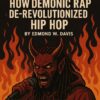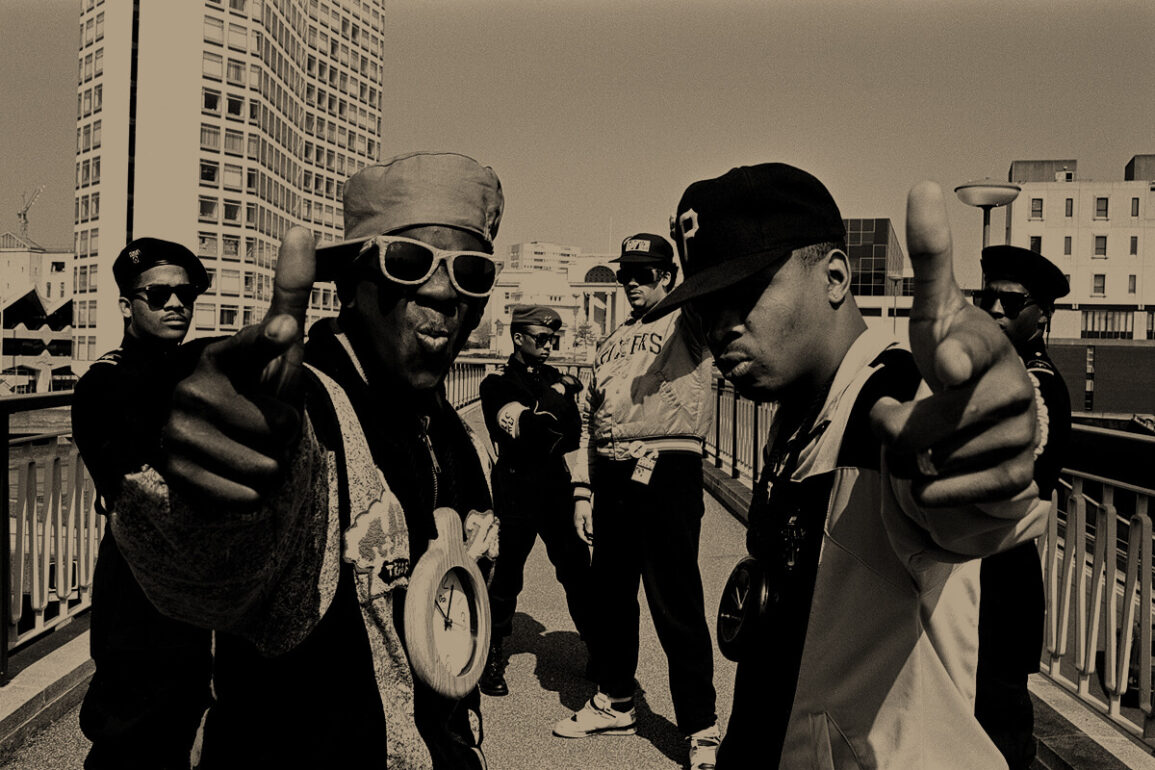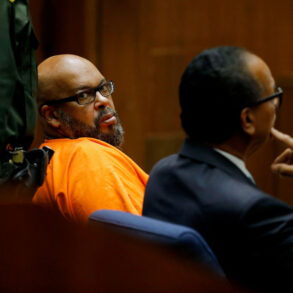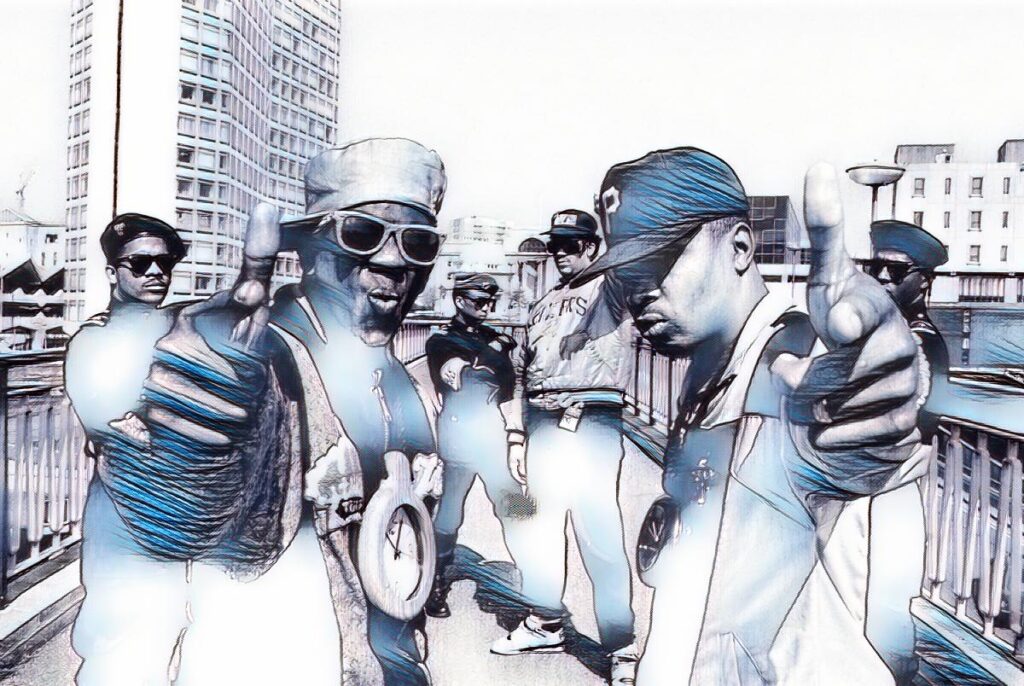
Hip Hop’s rich history is filled with iconic solo artists who’ve left an indelible mark on the culture. But let’s not forget the powerhouse rap groups and duos that have shaped the genre since its inception. From the streets of New York to the sun-soaked boulevards of LA, these collectives have given us some of the most memorable beats, rhymes, and albums in Hip Hop history.
In this list, we’re diving deep into the world of rap duos and groups that have defined and redefined what it means to be a team in Hip Hop. We’re talking about the crews that dropped classic albums, the duos that became cultural icons, and the groups whose influence can still be felt in today’s music scene.
From the early pioneers who laid the foundation for what was to come, to the game-changers of the ’90s who took Hip Hop to new heights, all the way to the modern-day crews pushing the genre forward – we’re covering it all. You’ll find East Coast legends who brought gritty realism to the masses, West Coast icons who put G-funk on the map, and Southern powerhouses who changed the game with their distinctive flows and beats. We’re talking about groups that have sold millions of records, headlined world tours, and inspired countless artists who followed in their footsteps.
But commercial success isn’t everything. We’ve also honored underground heroes whose raw talent and uncompromising vision earned them cult followings and critical acclaim. These groups challenged conventions, experimented with new sounds, and elevated Hip Hop as an art form. This list isn’t about individual skills (though there’s plenty of that to go around). It’s about the combined impact these groups have had on Hip Hop culture, their artistic innovation, and their ability to capture the zeitgeist of their era.
We’ve considered factors like lyrical prowess, classic albums, production quality, live performing, cultural impact, longevity, and overall influence on the genre. Some of these groups dominated the charts, while others were underground sensations that inspired a generation of artists. Some stayed together for decades, evolving with the times, while others burned bright and fast, leaving behind a legacy larger than their discography might suggest.
This list focuses on duos and groups rather than collectives that, while often influential, never recorded albums as one cohesive unit. For example, collectives like Native Tongues, Flavor Unit, Flipmode Squad, D.I.T.C., Project Blowed, Hit Squad, and Odd Future served as umbrellas for multiple acts but never released (non-compilation) albums together as a collective.
As you scroll through this list, you might find yourself nodding in agreement, raising an eyebrow in surprise, or even feeling fired up to defend your personal favorites. That’s the beauty of Hip Hop – it sparks passion and debate like no other genre. We encourage you to dive into the comments section and share your thoughts on our selections.
Remember, this may be OUR definitive list, but of course, it isn’t the final word – it merely serves as a celebration of the collective spirit that has driven Hip Hop forward since its inception. It’s an homage to the chemistry, the friendly competition, and the shared vision that occurs when talented artists come together to create something greater than the sum of its parts.
So, whether you’re a die-hard fan who can recite every verse from your favorite group’s debut album or a curious newcomer looking to dive deeper into Hip Hop history, this list has something for you. Get ready to revisit some classics, discover hidden gems, and maybe even spark a debate or two about who truly deserves the crown of the greatest rap group of all time.
Let’s jump in and celebrate the collectives that have made Hip Hop what it is today.
50. Fugees
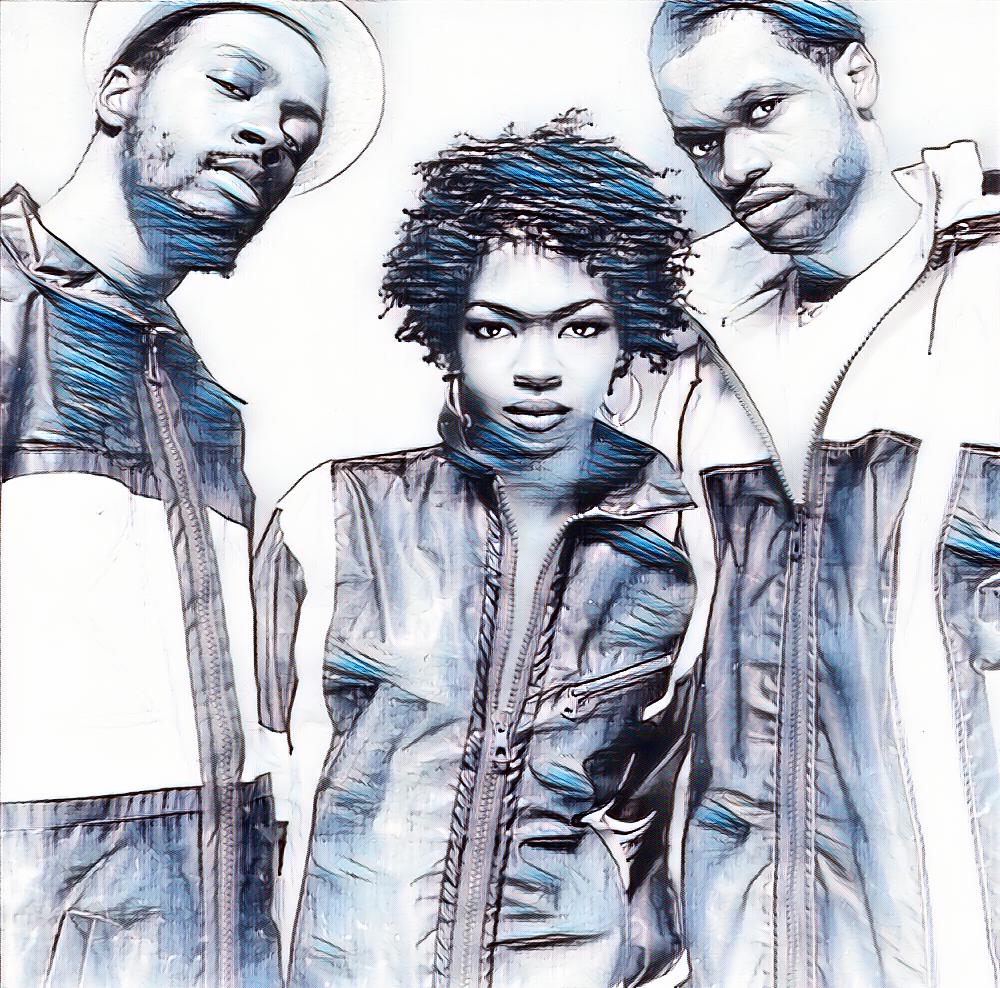


The Fugees dropped like a bomb on the Hip Hop scene in the mid-90s, bringing a fresh mix of rap, reggae, and R&B unlike anything you’d heard before. This New Jersey trio – Lauryn Hill, Wyclef Jean, and Pras Michel – came through with a sound that was street-smart and globally conscious at the same time.
With their sophomore album, The Score, the trio wasn’t playing around. It hit hard in ’96, serving up bangers like “Ready or Not” and their iconic flip of Roberta Flack’s “Killing Me Softly.” The Fugees created their own lane, blending genres and dropping knowledge that had both the underground and mainstream tuning in.
Lauryn’s razor-sharp rhymes and soulful vocals, Wyclef’s Caribbean-tinged beats and wordplay, and Pras’ steady presence made for a combo that was straight fire. They weren’t afraid to get political or personal, tackling everything from racism to relationships with a realness that connected with millions.
Though their run was brief, The Fugees’ impact on Hip Hop and music at large was major. They opened doors for artists to experiment with different sounds and showed that conscious rap could move units and minds alike.
49. Onyx
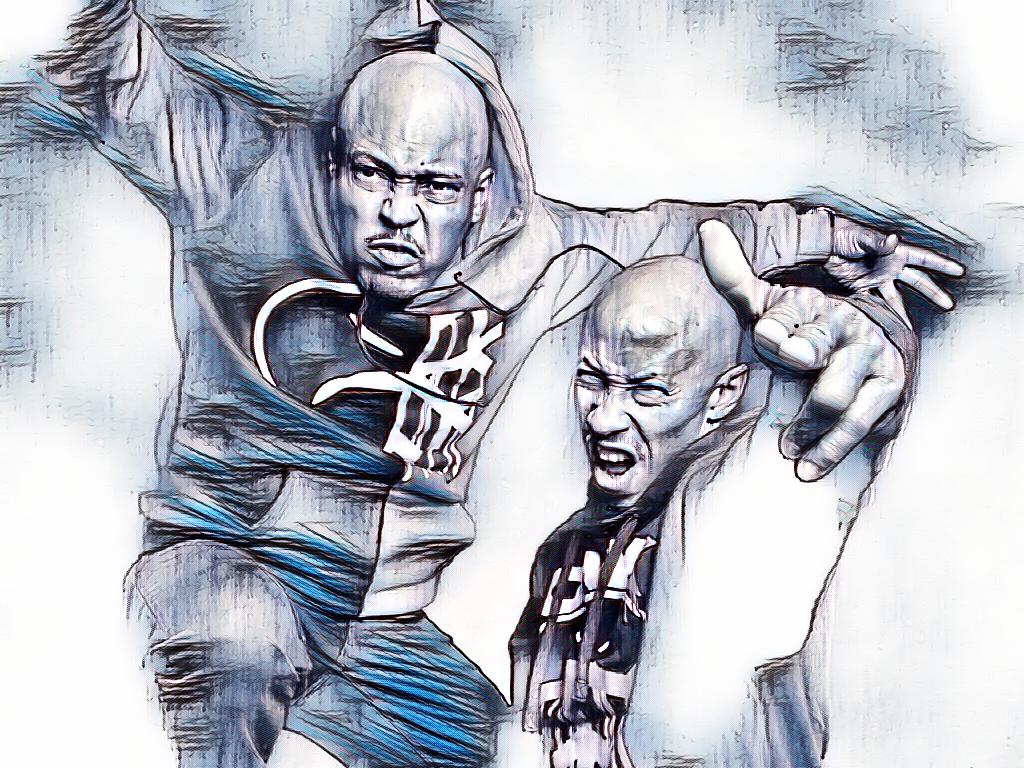


At number 49, Onyx brought a raw, explosive energy to Hip Hop that was impossible to ignore. Bursting onto the scene in 1993 with their debut album Bacdafucup, Sticky Fingaz, Fredro Starr, and the late Big DS (along with Sonny Seeza) introduced a hardcore style that made an immediate impact. Their signature grimy sound, aggressive delivery, and bald heads set them apart visually and sonically in a rapidly evolving genre.
The album’s breakout single, “Slam,” became an anthem, with its gritty vibe and rowdy hook capturing the chaotic essence of their music. Onyx’s contribution to Hip Hop went beyond just their sound; they embodied the rebellious spirit of the streets, bringing unfiltered rage and passion to their lyrics.
Their follow-up albums, most notably All We Got Iz Us (1995) and Shut ‘Em Down (1998), delivered more of the same intense energy and uncompromising attitude. Even as the years passed and the industry changed, Onyx never wavered from its roots. Their influence can still be felt in the music of newer hardcore acts, proof that their mark on Hip Hop is far from forgotten.
48. Above The Law
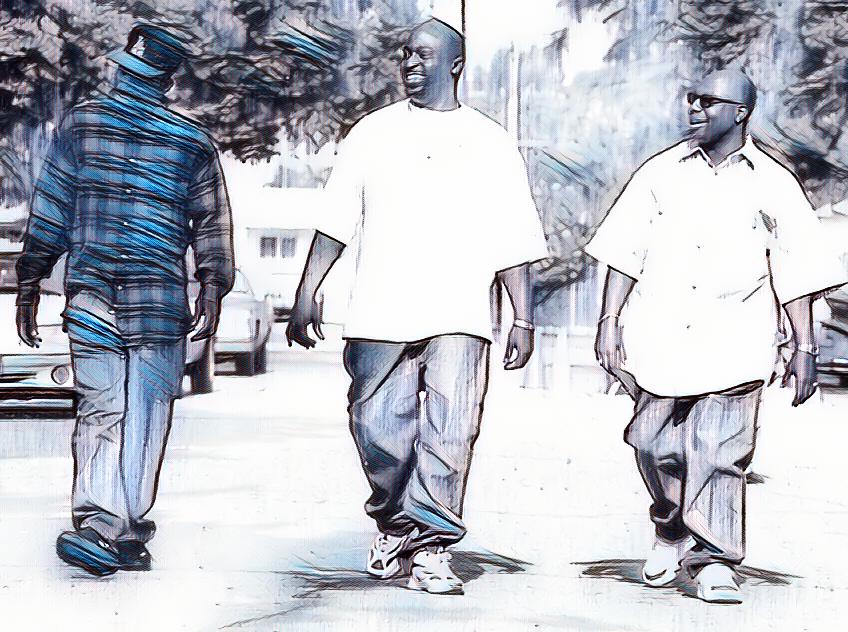


Above The Law is a group that made a significant mark on the West Coast Hip Hop scene, particularly through their pioneering contributions to the G-Funk sound. Often, Dr. Dre is credited with creating G-Funk, but Above The Law was equally crucial in shaping the genre’s distinct, laid-back vibe with heavy basslines and melodic synths. The group, led by the late KMG the Illustrator and Cold 187um, brought their own brand of gritty, streetwise storytelling to this new sonic landscape.
Their debut 1990 album, Livin’ Like Hustlers, is a West Coast classic that set the tone for their career. With production assistance from Dr. Dre, the album delivered hard-hitting tracks that encapsulated the struggles and triumphs of life on the streets. Their third album, Uncle Sam’s Curse, is an underappreciated gem. Released in 1994, it is perhaps the ultimate G-Funk album, blending social commentary with funk-infused beats in a way that has yet to be fully recognized.
Above The Law’s influence on Hip Hop, particularly G-Funk, is immense. Their contributions helped define an era, and their music continues to be celebrated by those who appreciate the West Coast’s golden age of Hip Hop.
47. Boot Camp Clik
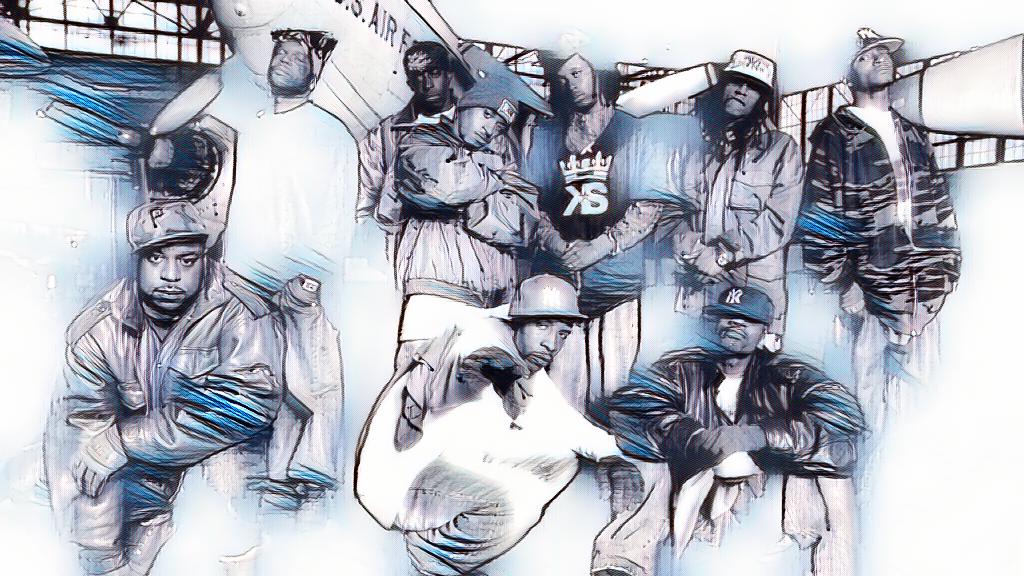


Boot Camp Clik is a powerhouse collective born from the gritty streets of Brooklyn. Formed in the early 1990s by Buckshot of Black Moon, this supergroup united the talents of Smif-N-Wessun (Tek and Steele), Heltah Skeltah (Rockness Monsta and Sean Price), and O.G.C. (Starang Wondah, Top Dog, and Louieville Sluggah). Known for their raw, underground Hip Hop style, they’ve consistently delivered high-impact music suited for heads who crave raw authenticity and lyrical depth.
Their debut, For the People (1997), introduced listeners to their unique blend of hard-hitting beats and bars. This was followed by The Chosen Few (2002), The Last Stand (2006), and Casualties of War (2007), albums that further explored their aggressive, no-nonsense approach to the genre.
Including Boot Camp Clik on this list is a bit of a cheat, as it allows us to spotlight Black Moon, Smif-N-Wessun, Heltah Skeltah, and O.G.C. in one entry. Each of these groups contributed significantly to Hip Hop, and their collective efforts under Boot Camp Clik magnified their influence – even if none of the BCC albums are true classics.
46. Clipse
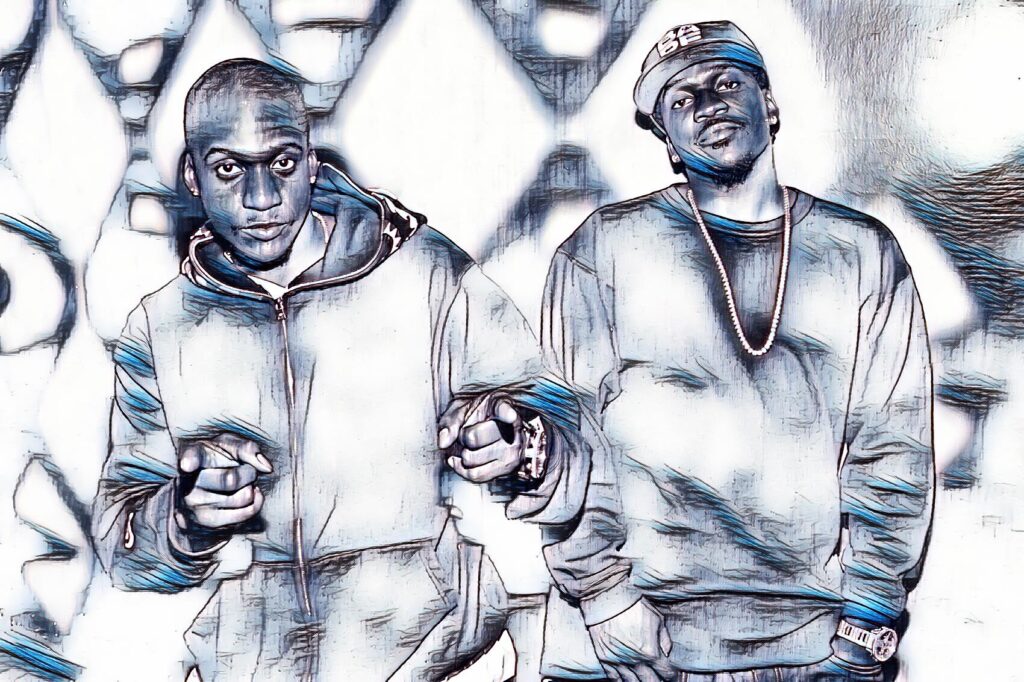


Clipse, the dynamic duo of brothers Pusha T and Malice (now No Malice), brought a raw and unfiltered voice to Hip Hop in the early 2000s. Hailing from Virginia Beach, the pair made waves with their unique blend of gritty coke rap narratives and slick wordplay. Their debut album, Lord Willin’ (2002), produced entirely by The Neptunes, delivered hits like “Grindin’” and “When the Last Time,” which became anthems for a generation. The album’s minimalist beats and sharp lyrics created an unmistakable sound.
In 2006, Clipse released Hell Hath No Fury, a project hailed as one of the most uncompromising and critically acclaimed rap albums of its time. The duo’s stark portrayal of life in the streets, combined with The Neptunes’ cold, sparse production, created a body of work that was both chilling and captivating. Tracks like “Mr. Me Too,” “Wamp Wamp (What It Do),” and “Keys Open Doors” exhibit the brothers’ ability to paint vivid pictures with their words, offering a look into the highs and lows of the drug trade.
Despite internal and external challenges, Clipse’s contributions to Hip Hop are unquestionable. Their ability to turn harsh realities into artful, compelling music has earned them a lasting legacy.
45. The Lox
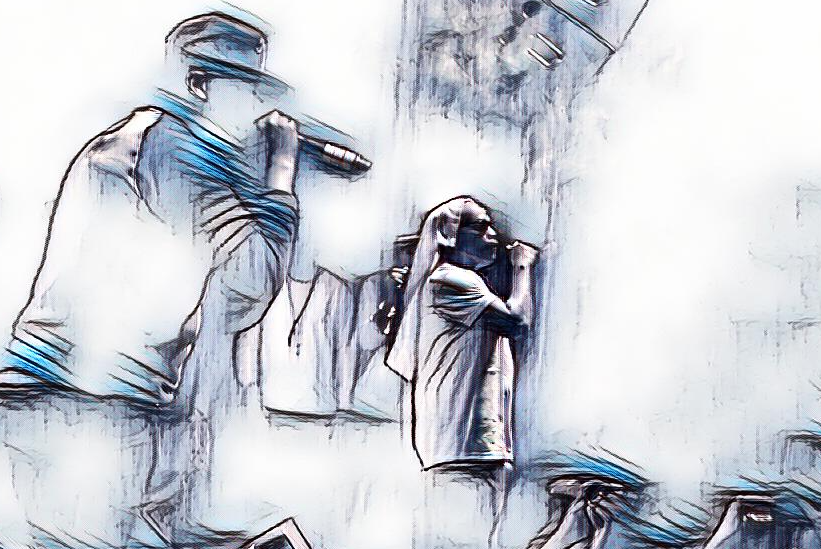


The Lox – Jadakiss, Styles P, and Sheek Louch – are straight-up lyrical assassins from Yonkers, New York. These guys have been spitting fire since the late ’90s, and their mic skills are no joke. We’re talking top-tier wordplay, razor-sharp delivery, and street narratives that’ll make your head spin.
Despite their undeniable talent, The Lox never quite dropped that classic album we all hoped for. Their debut Money, Power & Respect under Bad Boy had some bangers, but it didn’t fully capture their raw essence. When they bounced to Ruff Ryders and dropped We Are The Streets, it was closer to their true style, but still fell short of legendary status.
Even in their solo careers, while they’ve all had their moments (especially Jada), none of them managed to craft that timeless LP that would cement their legacy. It’s like having a Ferrari engine but never quite finding the right chassis to put it in. But don’t get it twisted – The Lox absolutely deserve their spot on this list. Why? Because when it comes to pure lyrical ability, these dudes are in a league of their own. Their verses on other people’s tracks, their freestyles, their mixtapes, their live performances – that’s where The Lox truly shines.
They might not have that one classic album to point to, but their impact on Hip Hop is big enough. The Lox represents that gritty, no-frills New York style that keeps it real no matter what. In a game full of gimmicks, these three have always stayed true to the art of rhyme.
44. Hieroglyphics
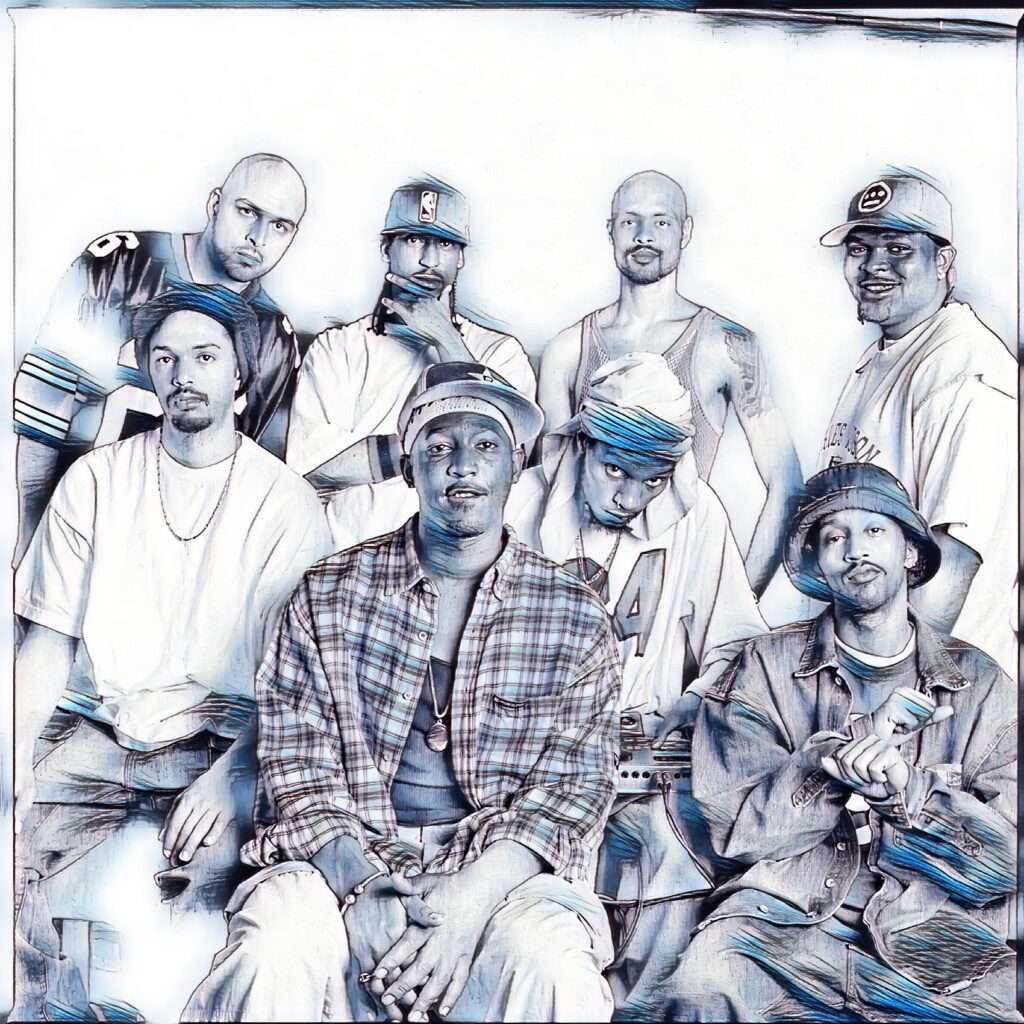


Hieroglyphics, the Oakland-based collective, has been a fixture i underground Hip Hop since the early ’90s. Founded by Del tha Funkee Homosapien, this crew brought a unique flavor to the genre, combining intricate wordplay with jazzy, boom-bap beats.
The collective includes members of Souls of Mischief (A-Plus, Tajai, Opio, and Phesto Dee), along with Del, Casual, and Pep Love. Domino serves as their in-house producer, with A-Plus occasionally taking on production duties.
Hieroglyphics’ journey represents artistic resilience. After facing setbacks with major labels, they founded Hieroglyphics Imperium in 1996, a shining example for independent Hip Hop labels. Their debut album as a group, 3rd Eye Vision (1998), exhibited their collective talents and unique chemistry.
Hieroglyphics apart blend of battle-ready rhymes, freestyling prowess, and an offbeat sensibility set them apart. Their spiritual, down-to-earth mindset is reflected in their music and iconic three-eyed logo.
Beyond group efforts, individual members have made significant contributions to Hip Hop. Del’s solo catalog has several classics like his debut LP I Wish My Brother George Was Here (1991) and his underground masterpiece Deltron 3030 (2001), and Souls of Mischief’s 93 ’til Infinity (1993) is a timeless gem too.
Their DIY ethos and artistic integrity have inspired countless independent artists, making Hieroglyphics a crucial part of Hip Hop history.
43. Marlowe
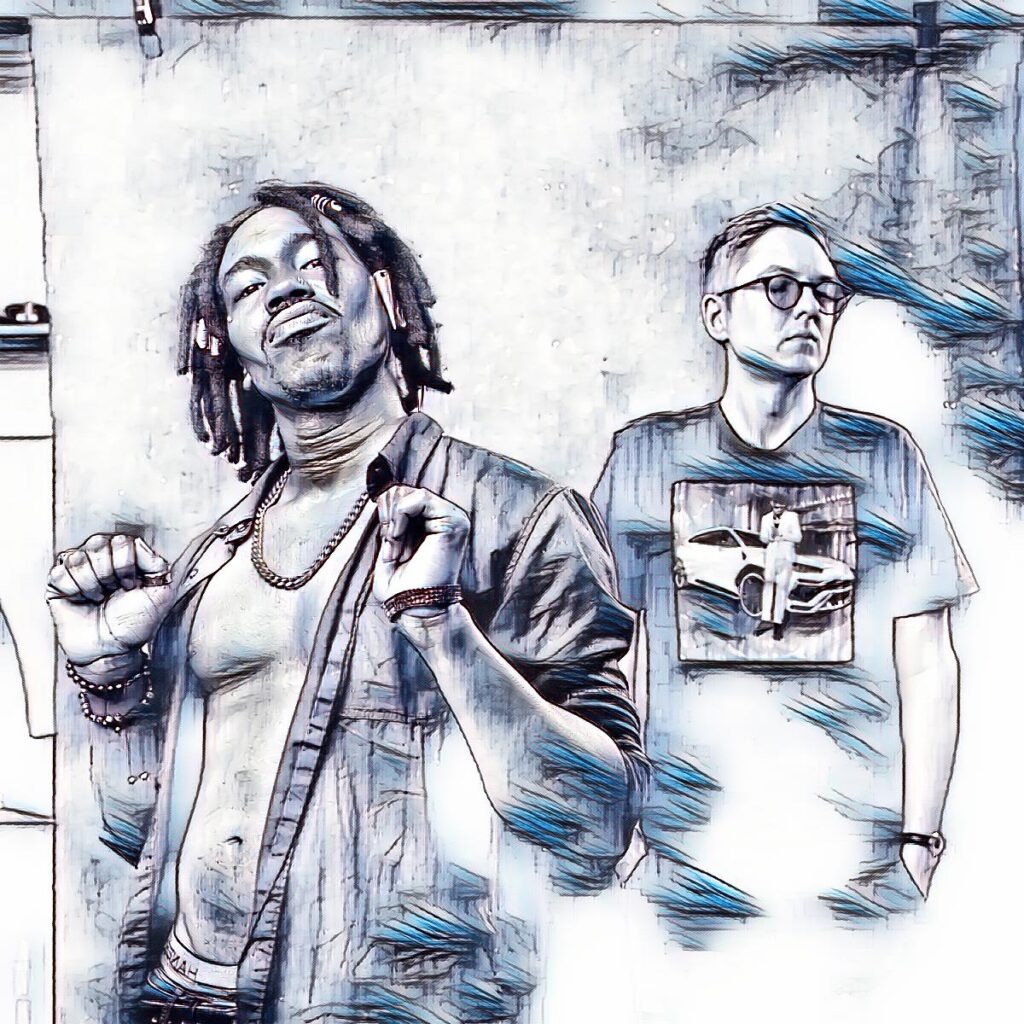


Marlowe’s inclusion on our list of the Top 50 Greatest Rap Groups of All Time might raise a few eyebrows, given their relatively recent arrival on the Hip Hop scene. However, this North Carolina duo has quickly proven they belong among the genre’s elite. Comprising producer L’Orange and MC Solemn Brigham, Marlowe burst onto the scene in 2018 with their self-titled debut. Their unique blend of psychedelic beats and rapid-fire lyricism immediately caught the attention of Hip Hop heads worldwide.
L’Orange, a veteran of the underground scene, brings a distinctive production style that draws from classic psych and garage music while incorporating golden-era Hip Hop elements. His beats provide the perfect backdrop for Solemn Brigham’s breakneck flows and razor-sharp wordplay.
In a short span, Marlowe has released three critically acclaimed albums: Marlowe (2018), Marlowe 2 (2020), and Marlowe 3 (2022), each release building upon their signature sound. Marlowe effortlessly blends sociopolitical commentary with clever punchlines, all delivered over simultaneously nostalgic and futuristic beats.
Despite being a newcomer compared to some legendary names on this list, Marlowe’s placement among the all-time greats is a nod to their exceptional talent and the potential for future greatness, if three back-to-back excellent albums aren’t enough. If you haven’t yet experienced their unique brand of Hip Hop, now is the time to dive into their discography and discover why they’ve earned their spot on our list.
42. Organized Konfusion



Organized Konfusion, the duo of Prince Po and Pharoahe Monch, is celebrated for their intricate lyricism and complex wordplay. Their 1991 self-titled debut album, Organized Konfusion, introduced listeners to their unique blend of thought-provoking lyrics, intricate wordplay, and experimental production. They weren’t afraid to tackle heavy themes, mixing social commentary with a technical proficiency ahead of its time.
Their second album, Stress: The Extinction Agenda (1994), is often hailed as a classic in the underground Hip Hop scene – for us it’s one of the best albums in one of Hip Hop’s best years. Tracks like “Stray Bullet” showed their ability to weave storytelling with a cinematic feel, while the album’s production pushed the limits of what could be done with sampling and beats. The duo’s synergy and technical skills made them favorites among Hip Hop purists who appreciated true lyrical skill.
Even though they didn’t achieve mainstream success, Organized Konfusion’s influence on the genre is undeniable. Their work laid the groundwork for future generations of lyricists who prized complexity and depth in their music. Despite releasing only three albums, their impact on the genre is profound, and their music continues to be celebrated by those who appreciate the art of lyricism. Pharoahe Monch’s later solo career only added to the group’s legacy, as fans and critics alike continued to celebrate the duo’s contribution to Hip Hop.
41. Ultramagnetic MCs
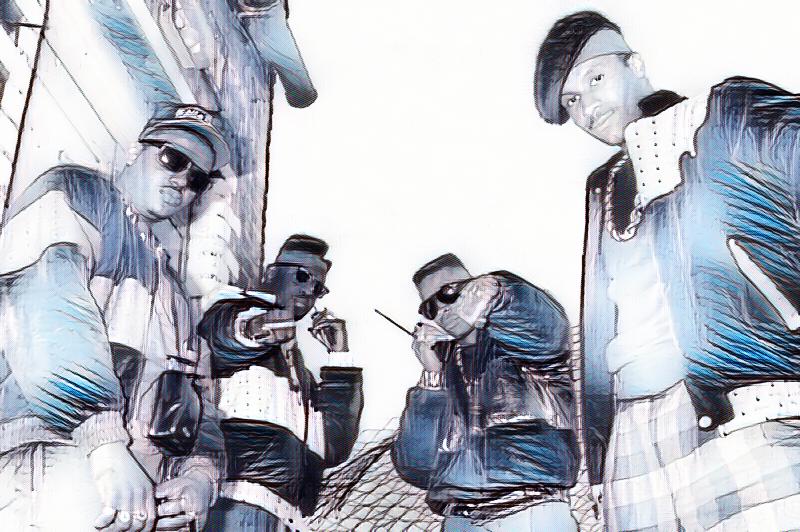


Ultramagnetic MCs hold a vital place in Hip Hop history, primarily for their groundbreaking debut album, Critical Beatdown. Released in 1988, this album is an innovative classic that helped redefine Hip Hop. With a unique blend of futuristic production and mind-bending lyrics, Ultramagnetic MCs introduced the world to Kool Keith, whose off-kilter style and alter egos would later become legendary.
While Critical Beatdown remains their magnum opus, their subsequent albums, though uneven, still have moments worth exploring. Their second album, Funk Your Head Up (1992) was a decent follow-up even if it didn’t quite capture the raw energy of their debut. The third album, The Four Horsemen (1993), is often underrated, with some of their best work hidden within its tracks. However, by the time they released The Best Kept Secret, their fourth album in 2007, the magic seemed to have faded, leaving it largely forgotten in their discography.
Despite the later missteps, Ultramagnetic MCs are still considered one of the most influential groups in Hip Hop, largely because of Critical Beatdown and the career it launched for Kool Keith. His influence and innovation in the genre, coupled with the groundbreaking nature of their debut, secure Ultramagnetic MCs’ place on this list of the top 50 greatest rap groups of all time.
40. Digital Underground
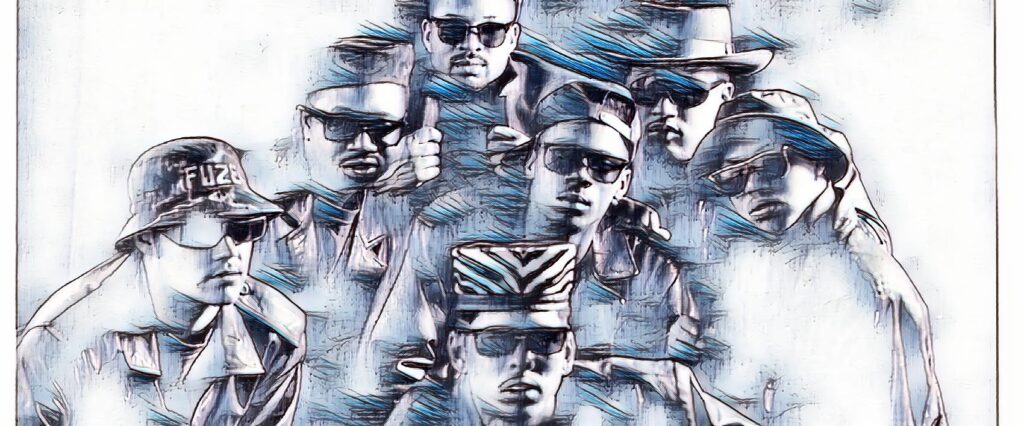


Oakland’s Digital Underground crashed the Hip Hop party in the late ’80s with a sound that was equal parts funky, freaky, and flat-out fun. Led by the eccentric Shock G (aka Humpty Hump) and his crew of merry pranksters, these cats brought a wild, P-Funk-inspired energy to the game that was impossible to ignore.
Their 1990 debut album, Sex Packets, hit like a glitter bomb in the serious rap world. The smash hit “The Humpty Dance” had everyone from hood corners to suburban cul-de-sacs doing that goofy dance and quoting lines like “I once got busy in a Burger King bathroom.” But DU was more than novelty tracks – cuts like “Doowutchyalike” and “Freaks of the Industry” showed off their musicianship and clever wordplay.
Digital Underground kept the party going with albums like Sons of the P (1991) and The Body-Hat Syndrome (1993), always bringing that mix of humor, social commentary, and straight-up good times. They weren’t afraid to get weird or experimental, pushing Hip Hop in new, funkadelic directions.
While Shock G and crew might be best known now for giving us 2Pac’s first major appearance, their impact on Hip Hop goes way beyond that. They showed that rap could be silly and serious, conscious and party-ready all at once. Sadly, Shock G passed away in 2021, but his larger-than-life personality and innovative contributions to Hip Hop continue to influence and inspire. Digital Underground’s legacy is a reminder that in Hip Hop, there’s always room for the strange, the funky, and the downright revolutionary.
39. The Coup



The Coup, the iconic rap group from Oakland, California, carved a unique niche in the Hip Hop landscape. Founded by Boots Riley and Pam the Funkstress in the early ’90s, they combined sharp social commentary with a blend of funk, soul, and innovative sampling. Their political lyrics tackled systemic oppression, class struggles, and social justice, offering a powerful voice for the marginalized.
Their debut album, Kill My Landlord (1993), introduced audiences to their knack for blending humor with stark realities. The following album, Genocide & Juice (1994), solidified the group’s reputation, featuring clever wordplay and grooves that had heads nodding while provoking thought. In 1998, Steal This Album further explored their artistic vision, touching on themes of capitalism and activism with infectious beats. The Coup continued to evolve with Party Music (2001), known for its scathing critique of American culture, while Pick a Bigger Weapon (2006) showcased The Coup’s growth with its powerful messages wrapped in catchy hooks.
The loss of Pam the Funkstress in 2017 left a significant void in the Hip Hop community, but her legacy continues to inspire artists to blend politics and artistry fearlessly. The Coup’s electrifying performances and profound messages remind us that Hip Hop is not only about rhythm and rhyme; it can be a rallying cry for change. The spirit of The Coup endures, igniting passion and discourse in the hearts of many.
38. Compton’s Most Wanted



Compton’s Most Wanted (CMW) is a pillar of West Coast Hip Hop, delivering raw, street narratives that capture the essence of life in Compton. The group, led by MC Eiht, burst onto the scene in the early ’90s with their gritty sound, blending hard-hitting beats with vivid storytelling. Their music was a direct reflection of the harsh realities of gang life, police brutality, and survival in one of Los Angeles’ most notorious neighborhoods.
Their third album, Music to Driveby, released in 1992, is their magnum opus and a West Coast classic. Tracks like “Hood Took Me Under” and “Def Wish II” are quintessential CMW, featuring dark, moody production paired with MC Eiht’s laid-back, but commanding flow. This album not only cemented their place in Hip Hop history but also set the stage for MC Eiht’s successful solo career, making him one of the West Coast’s most recognizable voices.
CMW’s music provided a soundtrack for the streets, delivering unfiltered tales from the frontlines of Compton. While Music to Driveby is their crowning achievement, CMW’s entire catalog – and especially It’s a Compton Thang (1990) and Straight Checkn ‘Em (1991) – remains essential listening for fans of authentic, West Coast gangsta rap.
37. Goodie Mob
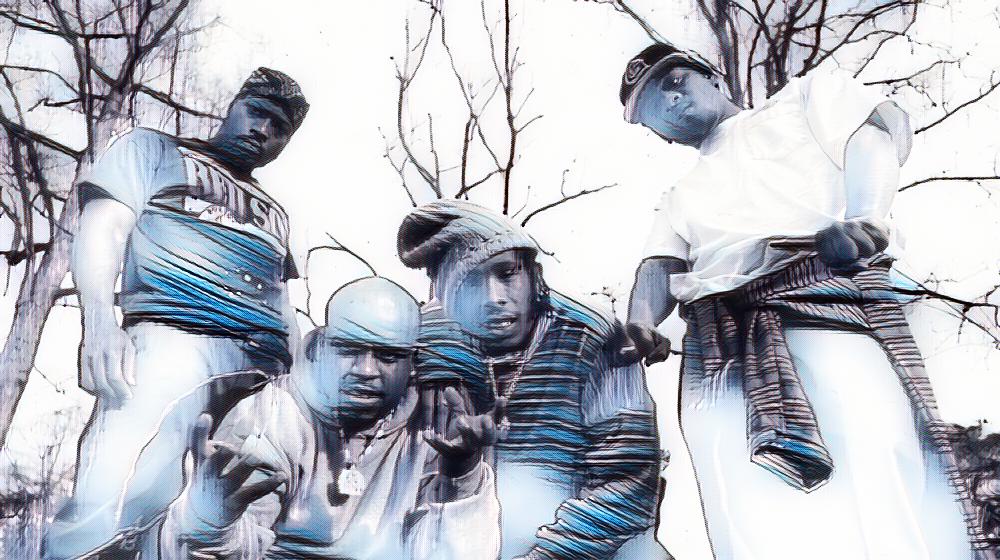


Goodie Mobb holds a special place in Hip Hop, especially for fans of Southern rap. Hailing from Atlanta, this group brought a unique sound and perspective to the genre that hadn’t been heard before. Their debut album, Soul Food, released in 1995, is nothing short of a classic. It blends soulful production (handled by Organized Noize) with gritty, socially conscious lyrics, The album’s title track and songs like “Cell Therapy” offered a raw, unfiltered look at the struggles and triumphs of Black life in the South. The album’s exploration of themes like spirituality, poverty, and community struck a chord with listeners, making it one of the era’s defining albums.
Their follow-up, Still Standing (1998), solidified Goodie Mobb’s reputation as one of the South’s most important voices. The album continued to tackle heavy issues while maintaining the group’s signature sound. It continued the themes of social and political commentary, with tracks like “Black Ice (Sky High)” and “They Don’t Dance No Mo’” capturing the group’s ability to balance heavy topics with infectious hooks and thick, funky beats.
While later albums didn’t capture the same magic as the first two, Goodie Mobb’s impact on Hip Hop is undeniable. They helped to pave the way for the Southern rap explosion that would follow and introduced the world to CeeLo Green, one of the most versatile and enduring talents in the music industry. Goodie Mobb’s legacy is rooted in their ability to merge substance with style, making their first two albums essential listening for any Hip Hop fan.
36. Dilated Peoples



Dilated Peoples carved out a distinct place in Hip Hop with their sharp lyricism and DJ-centered production. Comprising Evidence, Rakaa Iriscience, and DJ Babu, the group first gained attention in the late 1990s with a series of underground singles that displayed their commitment to raw, unfiltered Hip Hop. Their debut album, The Platform (2000), quickly established them as a force to be reckoned with, delivering tracks that balanced gritty beats with thoughtful commentary.
The group’s chemistry shines through in their work, with Evidence and Rakaa’s verses playing off each other while DJ Babu’s skills on the turntables add another layer of depth. Their second album, Expansion Team (2001), built on this foundation, featuring the hit single “Worst Comes to Worst,” which became an anthem for perseverance and resilience.
Dilated Peoples continued to evolve with Neighborhood Watch (2004), an album that included the Kanye West-produced track “This Way,” which brought them broader mainstream attention without sacrificing their underground appeal. Despite the pressures of the industry, the group maintained its integrity, consistently delivering quality music that spoke to both die-hard Hip Hop heads and casual listeners, culminating in what arguably is their very best album: Directors of Photography, released in 2014.
Throughout their career, Dilated Peoples have stayed true to their roots, embodying the spirit of Hip Hop while creating music that resonates on multiple levels. Their influence on the underground as well as the mainstream scene secures their place among the greatest rap groups of all time.
35. The Pharcyde
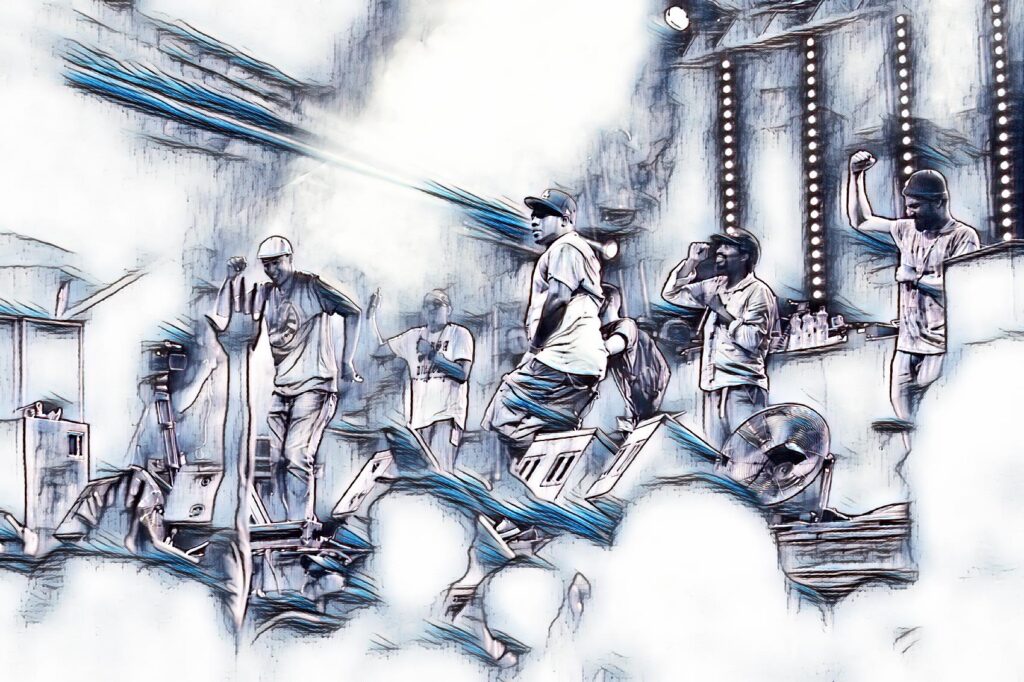


Straight outta South Central LA, The Pharcyde hit the Hip Hop scene in the early ’90s like a breath of fresh air. These four cats – Imani, Slimkid3, Fatlip, and Bootie Brown – brought a quirky, off-kilter vibe that was miles away from the gangsta rap dominating the West Coast at the time.
Their debut album, Bizarre Ride II the Pharcyde, dropped in ’92 and had heads scratching and nodding at the same time. Tracks like “Passin’ Me By,” “Otha Fish,” and “Ya Mama” were funny, clever, and relatable – these dudes weren’t afraid to get goofy or show their vulnerable side. The Pharcyde’s flows were tight, their beats were jazzy and funky, and their lyrics were packed with wordplay that rewarded repeat listens.
They followed up with Labcabincalifornia in ’95, which saw them evolving their sound with help from a young J Dilla. The video for “Drop” had everyone rewinding their VCRs, trying to figure out how they pulled off those backward moves.
While they may not have blown up commercially like some of their contemporaries, The Pharcyde’s influence on Hip Hop is huge. They showed that you could be different, even weird, and still be dope. Their playful approach and jazz-infused beats inspired a generation of alternative rap acts. To this day, their music stays in rotation for heads who appreciate Hip Hop that dares to be different.
34. Brand Nubian
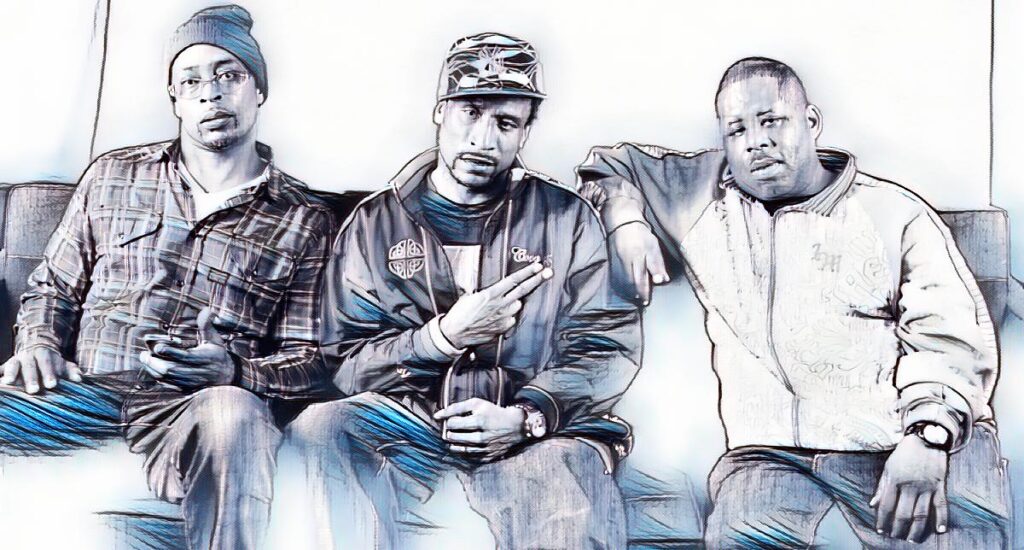


Brand Nubian’s impact on Hip Hop is big, with their debut album One for All (1990) as a cornerstone of the golden era. The group was formed in 1989 after Grand Puba’s previous group, Masters of Ceremony, disbanded. Puba joined forces with Sadat X, Lord Jamar, and DJ Alamo, seeking to create something new. Their first demo, “I Ain’t Goin’ Out Like That”, caught the attention of Dante Ross, an A&R executive at Elektra Records. But before signing them, Ross insisted they needed a group name and a defining track. The name “Brand Nubian” was inspired by a book Jamar was reading, symbolizing pride in African heritage, and the group’s name was finalized during a trip to a mall in New Rochelle.
One for All is a timeless Hip Hop classic, blending sharp social commentary with infectious beats. Tracks like “Slow Down,” “All for One,” and the controversial “Wake Up” became anthems, challenging the status quo and addressing issues affecting Black communities. The album’s success was partly driven by the controversy surrounding its Five-Percenter ideology, which sparked discussions and drew attention to the group’s unapologetic stance on their beliefs.
Shortly after their debut, internal conflicts led Grand Puba to leave the group in 1991, along with DJ Alamo. Despite the split, Lord Jamar and Sadat X pressed on as Brand Nubian, releasing In God We Trust in 1993, which featured the controversial hit single “Punks Jump Up to Get Beat Down.” Although In God We Trust and their 1994 album Everything is Everything didn’t achieve the same acclaim as their debut, they still contributed to the group’s legacy.
In 1997, the original members reunited for Foundation, an album that reminded fans of their early brilliance. Grand Puba’s return brought back some of the magic that made their debut so influential. Though Brand Nubian’s later work and various solo projects didn’t always capture the fire of One for All their legacy in Hip Hop is firmly established, marked by unique voices, social consciousness, and undeniable impact on the culture.
33. Salt N Pepa
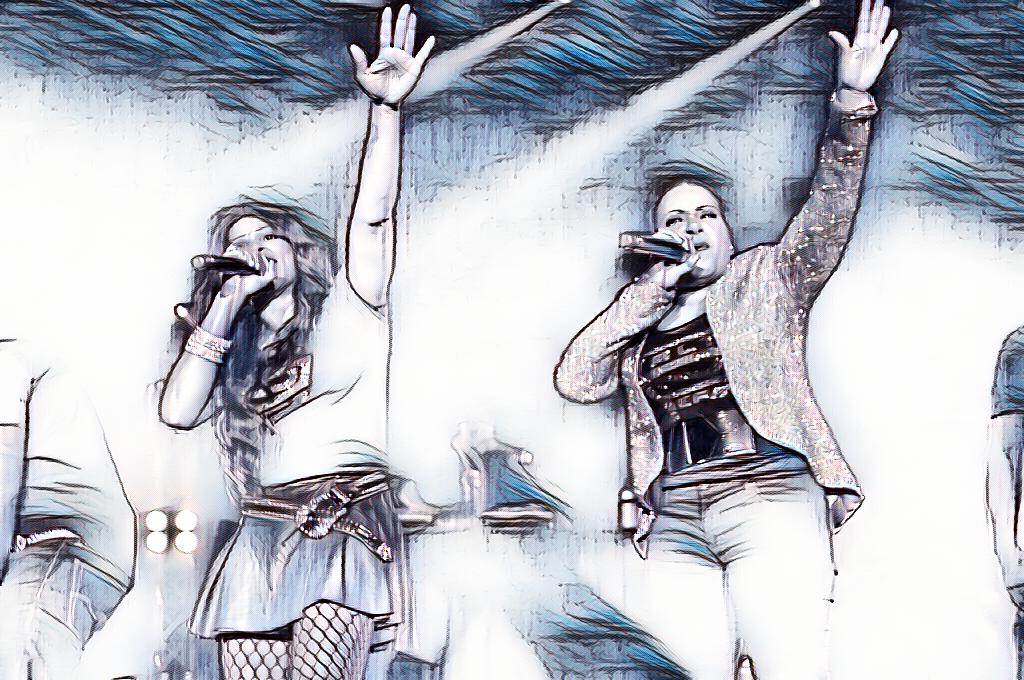


Salt-N-Pepa revolutionized Hip Hop with their bold presence and unapologetic femininity. Cheryl “Salt” James, Sandra “Pepa” Denton, and DJ Spinderella burst onto the scene in 1985 with “The Showstopper,” signaling the arrival of a powerful new voice in rap.
Their debut album, Hot, Cool & Vicious, set the stage for their rise. Interestingly, their most iconic track, “Push It,” wasn’t initially part of this album. It started as the B-side to their “Tramp” single, but its popularity led to a reissue of Hot, Cool & Vicious with “Push It” included. This track transcended Hip Hop and became a worldwide hit, propelling Salt-N-Pepa to mainstream success.
The group tackled serious issues with finesse. Songs like “Let’s Talk About Sex” and “Expression” addressed taboo topics head-on, empowering listeners and challenging societal norms. Their 1993 album Very Necessary solidified their status as Hip Hop royalty. “Shoop” and “Whatta Man” dominated the airwaves, while “None of Your Business” earned them a Grammy, proving their commercial and critical appeal.
Salt-N-Pepa redefined the image of women in Hip Hop, combining style, sexuality, and strength in a way that inspired generations of artists. These pioneers transformed Hip Hop, proving that women could not only compete in Hip Hop but lead the way.
32. Eightball & MJG
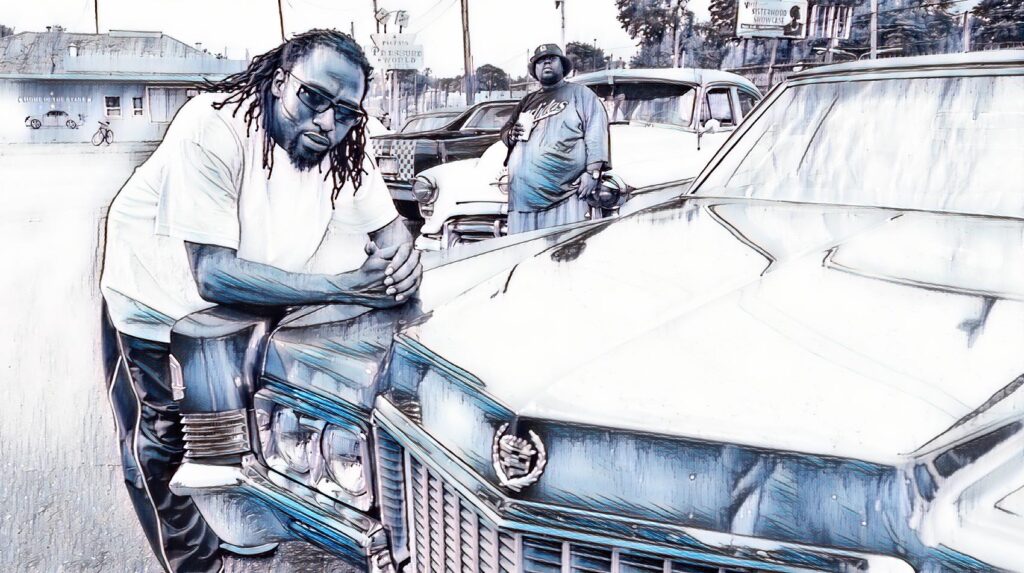


Eightball & MJG are Southern rap royalty, hailing from Memphis, Tennessee, and known for their gritty, soulful style that helped define the sound of the South. The duo burst onto the scene in 1993 with their debut studio album, Comin’ Out Hard, immediately setting the duo apart with its deep basslines, vivid storytelling, and a raw, unfiltered look at life in the streets. The album was a landmark moment not only for them but for Southern Hip Hop as a whole, carving out a space for Southern voices in a genre that was heavily dominated by the East and West Coasts up til then.
Throughout the ’90s, Eightball & MJG continued to build on their legacy with albums like On the Outside Looking In (1994), On Top of the World (1995), and In Our Lifetime Vol. 1 (1999). Their chemistry as a duo was undeniable, with Eightball’s deep, smooth delivery contrasting with MJG’s sharp, more aggressive style. Together, they created a sound that was both hard-hitting and introspective, offering commentary on the struggles and triumphs of life in the South.
Their influence extended beyond their own music as they helped pave the way for other Southern artists. Their ability to create timeless tracks that spoke to the realities of life in the South while maintaining a universal appeal made them a force to be reckoned with in Hip Hop. Songs like “Space Age Pimpin’” and “Pimp Hard” became anthems, capturing the spirit of Southern rap and influencing a generation of artists who followed in their footsteps.
Eightball & MJG’s contributions to the genre are significant, as they played a key role in bringing Southern Hip Hop to the forefront of the national conversation. Their legacy is built on a foundation of authenticity, lyricism, and an unwavering commitment to representing their roots, making them an essential part of Hip Hop’s rich history.
31. Little Brother
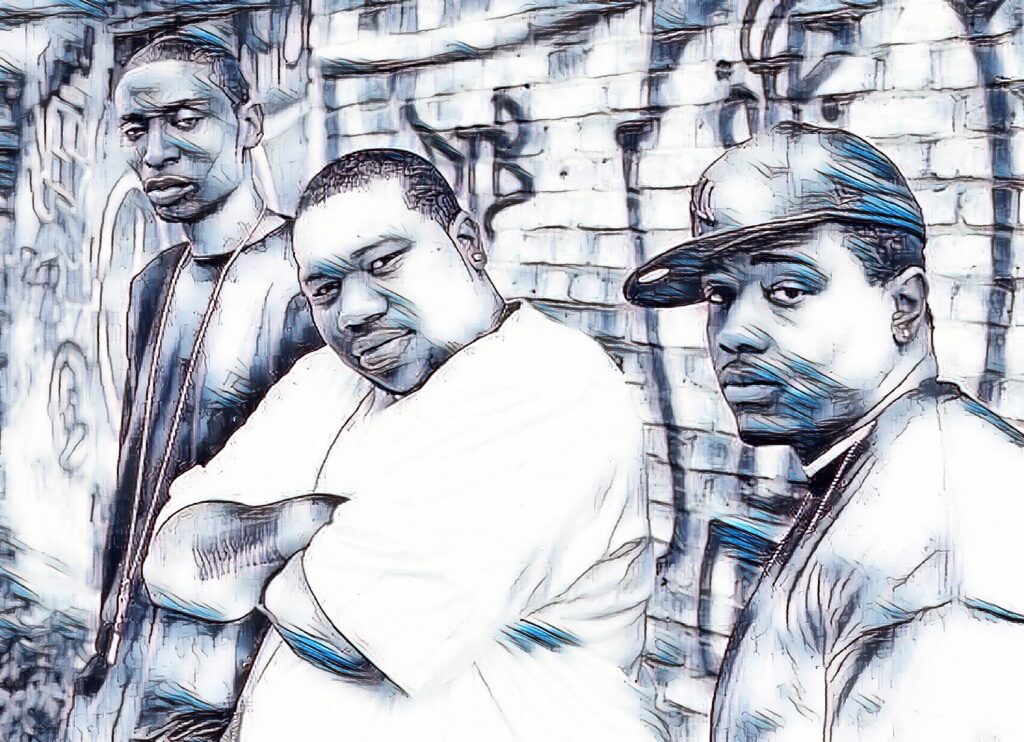


Durham, North Carolina-based Little Brother came through in the early 2000s with a sound that had heads turning and ears perking up. This trio – Phonte, Big Pooh, and 9th Wonder – brought a fresh take on classic Hip Hop vibes, mixing clever wordplay with soulful, sample-heavy beats.
Their debut album, The Listening, dropped in 2003 and quickly became an underground classic. Tracks like “Whatever You Say” and “The Way You Do It” showed off Phonte and Pooh’s lyrical chemistry, while 9th Wonder’s production had that warm, vinyl-crackle feel that made you wanna dust off your parents’ record collection.
Little Brother wasn’t about the bling or the gangsta image – these dudes were all about the art of rhyming and representing everyday struggles. They tackled everything from relationships to the music industry with honesty, humor, and a relatability that had fans feeling like they were listening to their homies spit.
Their 2005 follow-up, The Minstrel Show, was a concept album that took shots at the commercialization of Hip Hop, proving these cats weren’t afraid to get political or challenge the status quo. This album was a sharp, satirical take on the music industry, framed as a variety show on a fictional network called “UBN” (U Black N****s Network). With tracks like “Lovin’ It” and “Slow It Down,” Little Brother delivered a potent mix of catchy hooks and biting commentary, creating what many consider their magnum opus. The Minstrel Show didn’t pull any punches, addressing issues of authenticity, racial stereotypes, and the commodification of Black culture.
While 9th Wonder left the group after their second album, Phonte and Big Pooh kept the Little Brother flame burning, dropping solid albums with Getback (2007) and Leftback (2010), and a super strong one with May The Lord Watch (2019). Little Brother showed you could make thoughtful, soulful Hip Hop without compromising your artistic vision. To this day, their music serves as a reminder of Hip Hop’s power to speak truth and move souls.
30. Pete Rock & CL Smooth
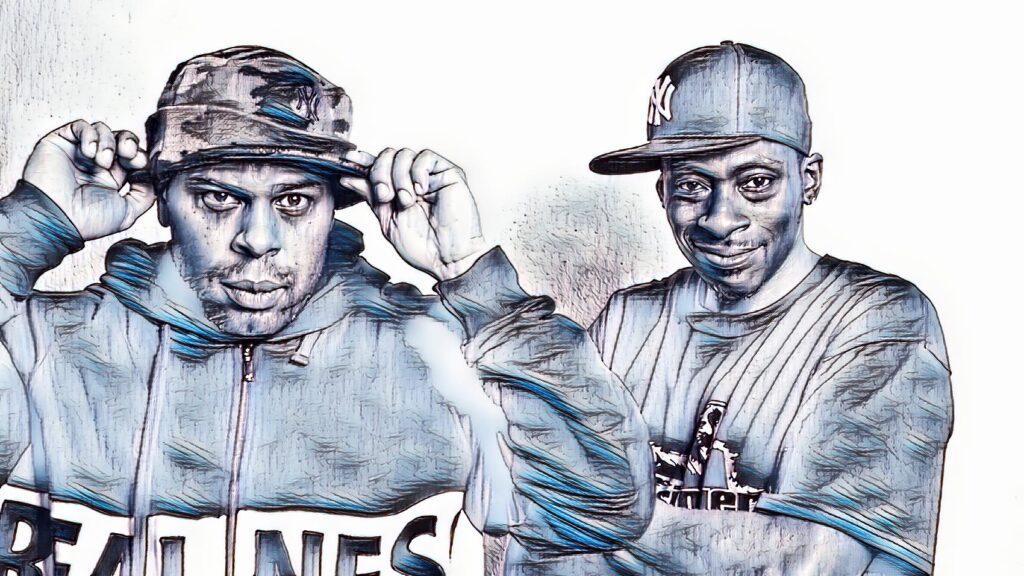


Mount Vernon, NYC´s Pete Rock & CL Smooth dropped into the Hip Hop scene in the early ’90s with a sound that was pure gold. Pete Rock’s production was like butter – smooth, rich, and filled with soulful samples that had heads bobbing from the jump. CL Smooth’s flow was effortless, his rhymes intricate and thoughtful, weaving stories that stuck with you long after the track ended.
Their debut EP, All Souled Out, gave us a taste, but it was their 1992 album Mecca and the Soul Brother that really put them on the map. Tracks like “They Reminisce Over You (T.R.O.Y.)” became instant classics, with Pete’s horn samples and CL’s heartfelt lyrics creating a vibe that was both nostalgic and fresh. These two weren’t about flash or gimmicks – they brought substance to the table. Their music tackled everything from social issues to personal growth, all wrapped up in beats that made you want to nod your head and rewind the tape.
While their partnership was relatively short-lived – the excellent The Main Ingredient (1994) would be their last album together – Pete Rock & CL Smooth’s impact on Hip Hop is massive. They helped define the sound of ’90s East Coast rap, influencing countless producers and MCs. Their work remains a blueprint for how to blend dope beats with meaningful lyrics, proving that Hip Hop can be both soulful and hard-hitting at the same time.
29. Jedi Mind Tricks



With their bold and innovative approach, Jedi Mind Tricks established themselves as a significant force in underground Hip Hop. Founded in Philadelphia in the early ’90s by Vinnie Paz and producer Stoupe the Enemy of Mankind, the duo’s early work set the tone for a prolific career. Their debut, The Psycho-Social, Chemical, Biological & Electro-Magnetic Manipulation of Human Consciousness (1997), featured a dense, sample-driven sound that quickly garnered attention for its complex production and Vinnie Paz’s intense lyricism.
The group’s second album, Violent by Design (2000), solidified their reputation with tracks like “Retaliation,” “Heavenly Divine,” and “Gengis Khan.” This record’s raw energy and sharp production underlined their ability to craft compelling, socially aware content. Visions of Gandhi (2003) was sometimes criticized because of its more Latin-flavored production, but is a dope album in its own right, featuring a range of guest artists such as Canibus and Kool G Rap.
In 2004, Legacy of Blood continued their streak, with notable collaborations including Sean Price, Killa Priest, and GZA. The 2006 release, Servants in Heaven, Kings in Hell, stands out for its powerful track “Uncommon Valor,” featuring an epic guest verse from R.A. The Rugged Man, and remains one of their most celebrated works.
Their 2008 album, A History of Violence, and Violence Begets Violence (2011) marked a transition period, the latter with contributions from DJ Kwestion and other collaborators. Stoupe returned for The Thief and the Fallen (2015) and The Bridge and the Abyss (2018), maintaining their influence in the genre. Their latest release, The Funeral & The Raven (2021), continues to capture their distinctive sound and lyrical depth.
Vinnie Paz’s strong solo catalog, including albums like Season of the Assassin (2010) and The Pain Collector (2018), complements the group’s legacy, highlighting his consistent impact and lyrical power. Jedi Mind Tricks’ discography represents a rich, varied contribution to underground Hip Hop, making their addition to a list like this logical.
28. M.O.P.
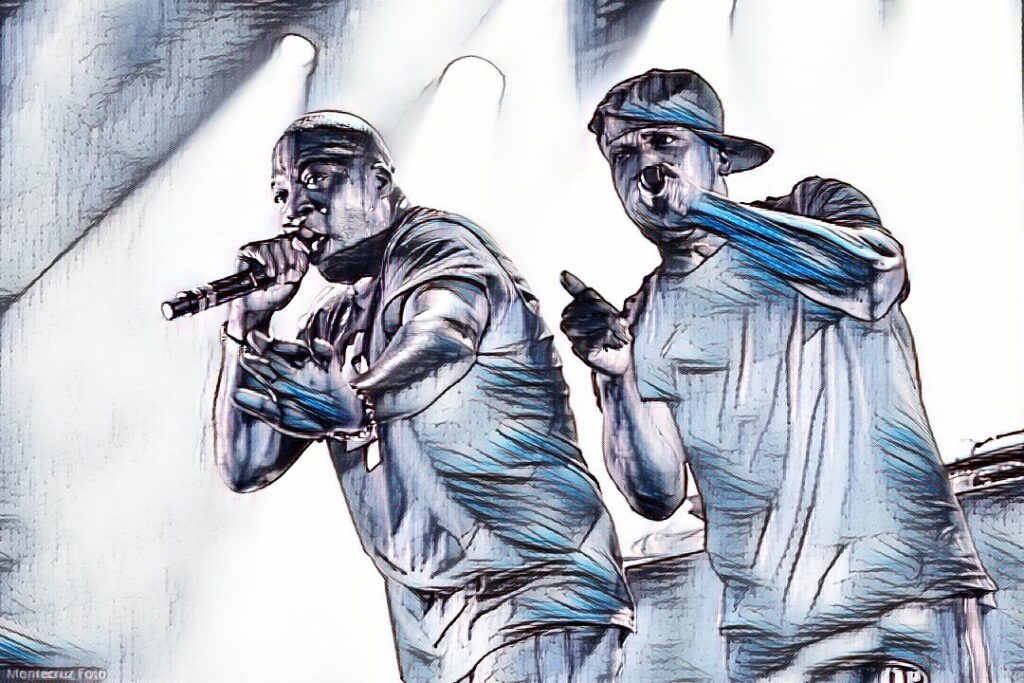


M.O.P. (Mash Out Posse) embodies the grit and aggression of Brooklyn’s Brownsville neighborhood, where Billy Danze and Lil’ Fame honed their craft. With their debut album To the Death (1994), M.O.P. established themselves as a force in Hip Hop with a sound that was raw, unapologetic, and intense. Their street-focused lyrics and hard-hitting beats quickly set them apart in the rap scene.
In 1996, M.O.P. followed up with Firing Squad, partly produced by the legendary DJ Premier. This album deepened their gritty style, with tracks like “Stick to Ya Gunz” and “World Famous,” showing off their no-nonsense approach. Two years later, First Family 4 Life (1998) continued their momentum, featuring the standout track “4 Alarm Blaze” with guest appearances from Teflon and Jay-Z. The album solidified their reputation for delivering hardcore, anthemic Hip Hop that resonated with their growing fanbase.
The pinnacle of their career came with the 2000 release of Warriorz. This album featured “Ante Up,” a track that became an instant classic. The song’s ferocious energy and relentless beat turned it into a street anthem, capturing the essence of M.O.P.’s sound. Warriorz also boasted hits like “Cold As Ice” and “G-Building,” cementing the album as a landmark in their discography.
Throughout the ’90s and beyond, M.O.P. remained steadfast in their approach, refusing to compromise their style for commercial success. Their consistency in delivering hardcore, street-centered music earned them a dedicated following and significant respect in the Hip Hop community.
27. Cunninlynguists



CunninLynguists have carved out a distinct and influential niche in the underground Hip Hop scene, blending sharp lyrics with innovative production. Formed by Deacon the Villain and Kno, the group made its debut in 2001 with Will Rap for Food. This project quickly became a collector’s item due to its raw creativity and the internet buzz it generated. Their follow-up, SouthernUnderground (2003), included standout tracks like “Seasons” featuring Masta Ace, which detailed the evolution of Hip Hop through the metaphor of seasonal changes.
2006’s A Piece of Strange is often hailed as their masterpiece, with Kno’s production and the group’s lyrical depth taking center stage. The album’s themes of morality, religion, and human struggles are conveyed through a dark and intricate narrative that sets it apart from the group’s earlier work. Tracks like “Brain Cell” and “Nothing to Give” exemplify the album’s complex yet accessible approach to storytelling.
CunninLynguists continued to evolve with Dirty Acres (2007), which showcased their Southern roots through sound and subject matter, and their 2011 release, Oneirology, explored the theme of dreams, with Kno’s production again earning widespread praise for its atmospheric and immersive qualities.
Kno’s 2010 solo album, Death Is Silent, is another highlight, blending haunting beats with introspective lyrics. The group’s 2017 album Rose Azura Njano brought a new character and concept to their discography, exploring the history and impact of Black music in America.
From their debut to their most recent projects, CunninLynguists have consistently delivered innovative music deeply rooted in the art of Hip Hop, making them one of the most respected underground crews in the genre.
26. Atmosphere
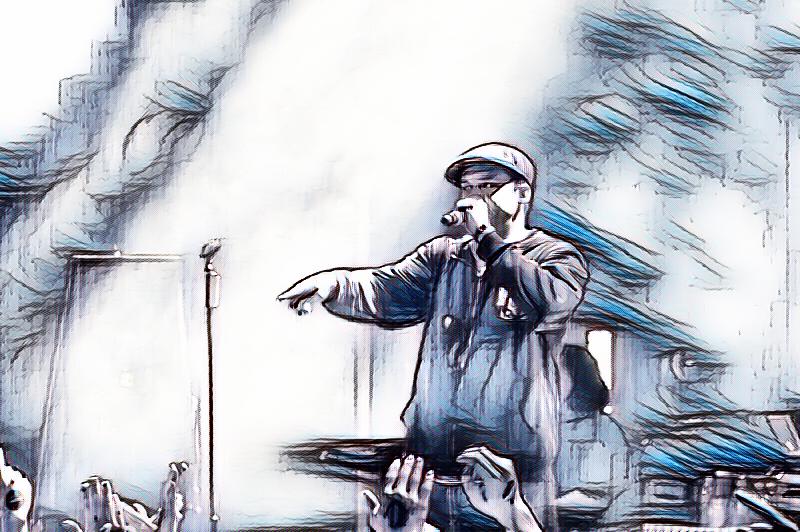


Atmosphere has become a staple of the underground scene with their heartfelt and honest approach to music. Slug, the group’s lyricist, is known for his reflective and often vulnerable storytelling, which has evolved from early third-person narratives to deeply personal explorations of life’s highs and lows. Ant, the producer, provides a diverse range of beats inspired by soul, funk, and rock, creating a sound that is distinctively their own.
Their 2002 album, God Loves Ugly, marked a turning point for the group, solidifying their reputation with raw, introspective tracks like “F**k You Lucy” that resonated with fans. The album’s gritty sound and unfiltered lyrics made it one of the best in their discography. Another significant release, When Life Gives You Lemons, You Paint That Shit Gold (2008), continued this trend, offering a more polished sound while maintaining the depth and sincerity that fans had come to expect. Songs from this album delve into themes of struggle and resilience, capturing the essence of Atmosphere’s ability to turn personal pain into art.
Among their most acclaimed work is You Can’t Imagine How Much Fun We’re Having (2005), often hailed as their magnum opus. With tracks like “Say Hey There” and “Little Man,” the album sees the duo at their best—Ant’s production is impeccable, and Slug’s lyrics are sharp and deeply moving.
Atmosphere has maintained a prolific output throughout their career, never straying far from the authenticity that defines them. Their legacy is one of consistency and evolution, continually offering music that speaks to the everyman human experience with a raw, unfiltered voice.
25. Armand Hammer
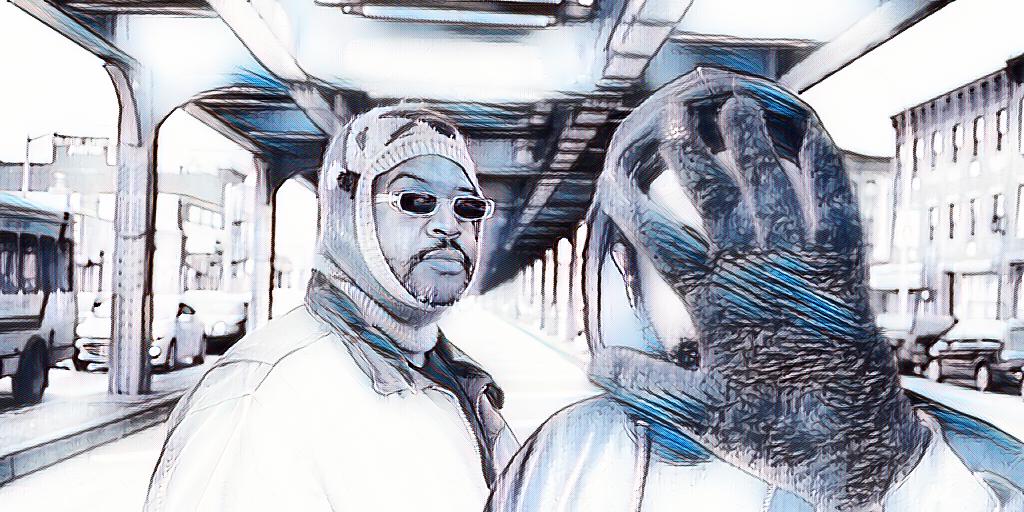


NYC-based Armand Hammer, the brainchild of billy woods and ELUCID, is the kind of Hip Hop that makes you sit up and pay attention. These aren’t here to cater to your casual listening pleasure – they’re here to challenge your mind and expand your sonic horizons.
Since their debut with Race Music in 2013 and its follow-up Rome in 2017, Armand Hammer has been cooking up some of the most thought-provoking, lyrically dense music in the game. Their bars are like puzzles wrapped in riddles, addressing everything from systemic oppression to existential dread, all delivered over beats that sound like they came from another dimension.
But it’s their later works where they really found their groove. Paraffin (2018), Haram (2021), and We Buy Diabetic Test Strips (2023) form a trifecta of mind-bending excellence. Paraffin is a masterclass in abstract lyricism and off-kilter production. Haram, their collab with The Alchemist, brings a grimy, sample-heavy backdrop to their cerebral rhymes. And We Buy Diabetic Test Strips adds a jazzier, more organic feel to their already eclectic sound.
The chemistry between woods and ELUCID is essential for Armand Hammer’s power. woods brings his cryptic wordplay and sharp social commentary, while ELUCID counters with his more abstract, stream-of-consciousness flow. Together, they create a vibe that’s unmatched in today’s Hip Hop scene.
They might not be topping the charts, but for those who like their Hip Hop raw, uncompromising, and intellectually stimulating, Armand Hammer is the real deal.
24. Three 6 Mafia
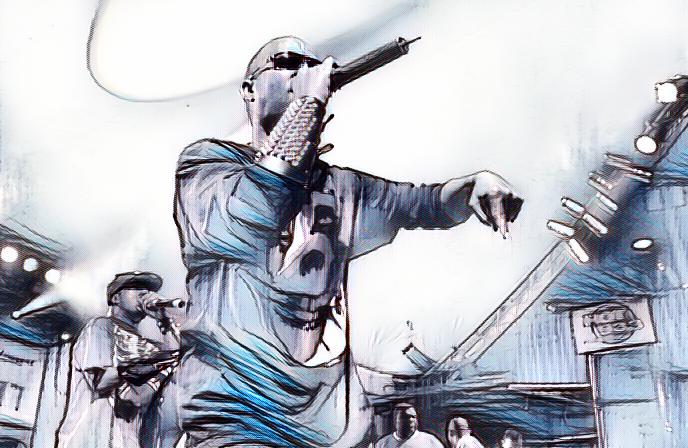


Three 6 Mafia, originating from Memphis, Tennessee, redefined Southern Hip Hop with their dark, pulsating beats and ominous lyrical content. Founded in the early ’90s by DJ Paul, Juicy J, and Lord Infamous, the group quickly became an underground sensation, releasing a series of influential tapes that solidified their status in the local rap scene. Their early sound, characterized by heavy 808s, eerie samples, and aggressive flows, played a crucial role in shaping the horrorcore subgenre and the broader Southern rap sound.
The group’s 1995 debut album, Mystic Stylez, is a raw, gritty masterpiece that captures the essence of their early work. Tracks like “Tear Da Club Up” and “Da Summa” exemplify the chaotic energy and dark, foreboding atmosphere that became their trademark. This album laid the groundwork for the rise of crunk music and influenced countless artists who followed in their footsteps.
While Mystic Stylez is a cornerstone of their discography, their 1997 release, Chapter 2: World Domination, is our favorite Three 6 Mafia LP. This album saw the group refining their sound, delivering a more polished but still intensely raw product. With hits like “Late Nite Tip” and “Hit a Muthafucka,” the album showcased their ability to craft tracks that were commercially viable but true to their underground roots.
The group’s mainstream breakthrough came with their 2000 album When the Smoke Clears: Sixty 6, Sixty 1, which debuted at number six on the Billboard 200. Tracks like “Sippin’ on Some Syrup” and “Who Run It” brought them national attention. Their success peaked again in 2006 when they became the first Hip Hop group to win an Academy Award for Best Original Song with “It’s Hard out Here for a Pimp” from the film Hustle & Flow.
Sadly, the group lost three core members over the years. Lord Infamous (1973-2013), Koopsta Knicca (1975-2015), and Gangsta Boo (1979-2023) all died way too young, but their influence remains integral to Three 6 Mafia’s enduring legacy. Their music has left an indelible mark on Southern rap and Hip Hop as a whole, and their place on this list is not in doubt.
23. People Under The Stairs
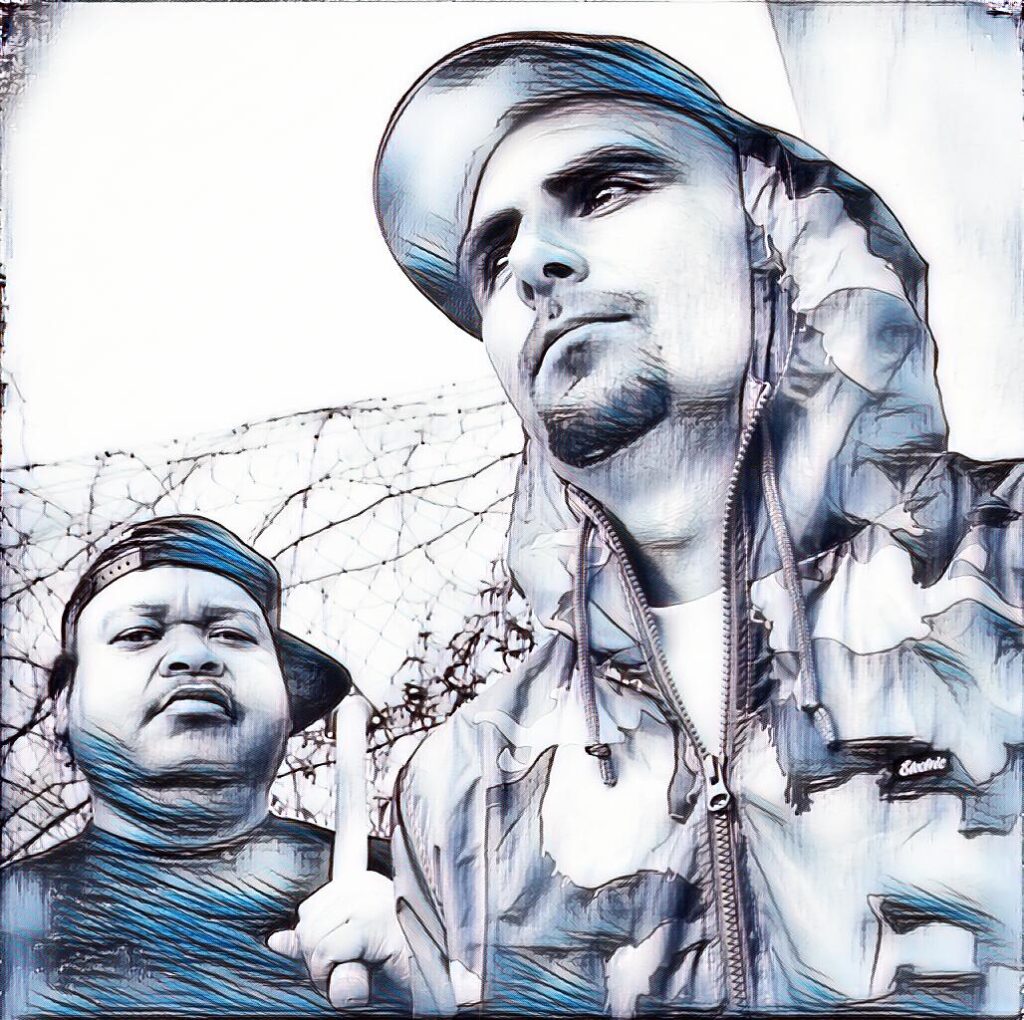


People Under the Stairs (PUTS) exemplifies the spirit of independent Hip Hop. This Los Angeles duo, consisting of Thes One and the late Double K, carved out a unique niche in the genre with their DIY ethos and timeless sound.
Formed in 1997, PUTS burst onto the scene with their 1998 debut album, The Next Step. This underground classic set the tone for their career, featuring jazzy, soulful boom-bap beats and clever, introspective lyrics. The album’s standout track, “San Francisco Knights,” became a fan favorite, displaying the group’s ability to craft catchy hooks and deliver smooth, engaging rhymes.
PUTS’ sophomore effort, Question in the Form of an Answer (2000), built on their debut’s success, further refining their signature sound. The group’s production skills shone through as they sampled from a wide range of genres, always paying homage to Hip Hop’s roots while sounding fresh and crisp.
Throughout their career, spanning nine studio albums from 1998 to 2019, PUTS maintained an unwavering commitment to their craft. They handled all aspects of their music, from production to engineering, embodying the true spirit of independent artistry. Albums like O.S.T. (2002), Stepfather (2006), and Fun DMC (2008) demonstrated their growth as musicians while staying true to their core sound.
Despite never achieving mainstream chart success, PUTS cultivated a devoted following through relentless touring and consistent output. They performed in over 40 countries across six continents, spreading their love for Hip Hop far and wide. PUTS inspired countless artists with their DIY approach and dedication to preserving the genre’s roots.
Their final album, Sincerely, The P (2019), marked the end of an era, closing out a remarkable 21-year run in the music industry. Tragically, Double K passed away in 2021, but the legacy of People Under The Stairs lives on through their music.
People Under the Stairs reminded us that Hip Hop can be both innovative and traditional, complex and accessible. Their legacy as underground heroes and champions of independent Hip Hop is secure, making them more than worthy of their spot among the greatest rap groups of all time.
22. Bone Thugs N Harmony



Bone Thugs-N-Harmony crashed into the Hip Hop scene like a meteor, leaving a crater-sized impact still felt today. These Cleveland kids and Eazy-E protegees – Bizzy Bone, Wish Bone, Layzie Bone, Krayzie Bone, and Flesh-n-Bone – brought a style to rap unique to their own.
Their breakout EP Creepin On Ah Come Up dropped in 1994, and Hip Hop hasn’t been the same since. With their rapid-fire, melodic flows they took the art of rhyming to a whole new level, spitting verses so fast you’d need to hit rewind to catch it all.
But it was their 1995 album E. 1999 Eternal that really blew the roof off. “Tha Crossroads” became an anthem, paying tribute to their mentor Eazy-E and showing the world that these dudes could do more than speed-rap – they could hit you right in the feels too. And Bone Thugs didn’t stop there. Albums like The Art of War (1997) and BTNHResurrection (2000) kept their momentum going, proving they weren’t one-hit wonders. They mixed street tales with spirituality, and hard beats with harmonies, creating a sound unmistakably theirs.
They had their ups and downs over the years, with so-so solo projects and lineup changes. But when they come together, that Bone magic is always there. From Tech N9ne to A$AP Rocky, you can hear echoes of Bone’s style in countless artists who came after them. They paved the way for rappers to sing, for singers to rap, and for everyone to push their vocal abilities to the limit.
Bone Thugs-N-Harmony’s unique sound, longevity, and impact on the culture as a whole make them an essential entry on a list like this.
21. EPMD



EPMD, short for Erick and Parrish Making Dollars, is a duo as essential to Hip Hop as beats and rhymes are. Formed in Brentwood, New York, in 1986, Erick Sermon and Parrish Smith dropped their debut album Strictly Business in 1988, and it hit the game like a sledgehammer.
This duo brought a whole new flavor to the table. Their laid-back flow, clever wordplay, and funky sample-heavy beats created a sound that was uniquely theirs. Tracks like “You Gots to Chill” and “Strictly Business” became instant classics.
But they didn’t stop there. EPMD kept the heat coming with albums like Unfinished Business (1989), Business As Usual (1990), and Business Never Personal (1994). Each release showed they had a knack for flipping obscure samples into head-nodding bangers, with their back-and-forth rhyme style keeping things dynamic on the rhyme front.
EPMD also played a crucial role in launching the careers of other dope artists. Their Hit Squad crew included future stars like Redman, K-Solo, and Das EFX, expanding their impact on the Hip Hop landscape. Even after breaking up and reuniting multiple times, EPMD’s legacy in Hip Hop is rock solid. When talking about the greatest rap groups of all time, EPMD isn’t background noise – they’re main event material.
20. Jurassic 5
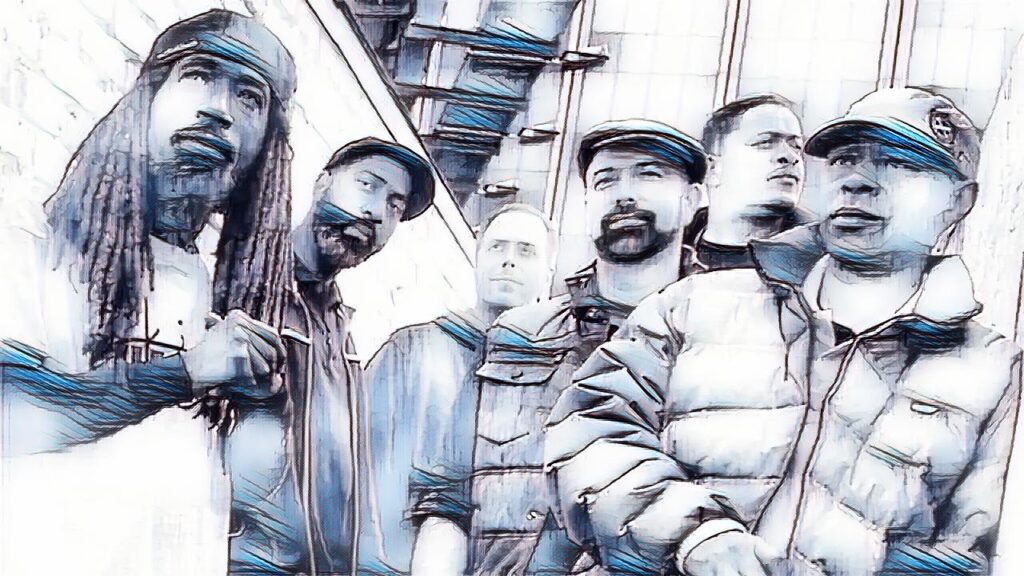


Jurassic 5 is a six-piece powerhouse from Los Angeles. Formed in 1993, this collective brought a fresh sound and positive energy to Hip Hop in an era and area dominated by gangsta rap.
Jurassic 5 came together from two separate crews, Rebels of Rhythm and Unity Committee, uniting MCs Chali 2na, Akil, Zaakir (aka Soup), and Marc 7even with turntable wizards DJ Nu-Mark and Cut Chemist. Their fusion of old-school flavor with innovative production techniques created a unique sonic identity that made them stand out in L.A.’s 90s Hip Hop landscape.
The group’s self-titled EP, released in 1997, marked their arrival with tracks like “Concrete Schoolyard” and “Jayou” displaying their harmonious interplay and clever lyricism. This release caught the attention of both underground heads and mainstream listeners, setting the stage for their major-label debut.
With 2000’s Quality Control, Jurassic 5 truly hit their stride. The album was a masterclass in group dynamics, with each MC bringing their distinct style to the table. Tracks like “Quality Control” and “Improvise” demonstrated their ability to craft catchy hooks without sacrificing lyrical substance.
They followed this success with Power in Numbers in 2002, which featured collaborations with Nelly Furtado, Kool Keith, Percee P, and Big Daddy Kane, further expanding their musical palette. Their 2006 album Feedback saw the group continue to evolve, incorporating more diverse musical influences while maintaining their signature sound. Despite Cut Chemist’s departure during this period, J5 proved they could adapt and thrive.
In an era often dominated by beef and braggadocio, J5 focused on uplifting messages and celebrating Hip Hop culture. Their music harkened back to the genre’s roots without sounding dated, appealing to nostalgic fans and new listeners alike. The group’s live performances are legendary, combining tight vocal harmonies with impressive turntablism. Their energy on stage translated their recorded material into unforgettable live experiences, earning them fans across musical genres.
After their initial break-up in 2007, their 2013 reunion and subsequent touring were met with enormous enthusiasm, proving the timeless appeal of their music. With Jurassic 5’s inclusion on this list, we honor their musical innovation, lyrical prowess, and lasting impact on Hip Hop culture.
19. Grandmaster Flash & The Furious Five
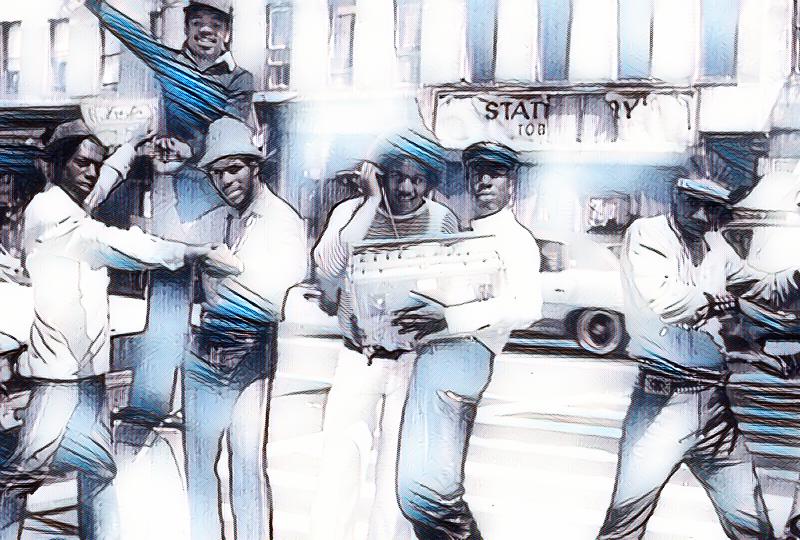


Grandmaster Flash & The Furious Five are central figures in Hip Hop’s evolution, embodying the genre’s early raw energy and revolutionary spirit. Formed in the South Bronx, the group blended innovative DJ techniques with powerful MCing, creating a sound that changed the musical landscape. Grandmaster Flash, born Joseph Saddler, was a visionary behind the turntables, introducing new techniques foundational to Hip Hop. His contributions to DJing were pivotal, turning turntables into an instrument of its own.
The group’s influence surged with The Message (1982), a track that highlighted Melle Mel’s incisive storytelling. This song was groundbreaking, offering an unvarnished look at life in the inner city and proving that Hip Hop could be a platform for social commentary. Alongside tracks like “Grandmaster Flash on the Wheels of Steel,” “New York, New York,” “Superrappin’,” and Melle Mel’s “White Lines,” they crafted a legacy of tracks that shaped the genre.
Though internal conflicts and disputes with Sugarhill Records led to their breakup in the mid-1980s, including a notable lawsuit, the group’s influence remained significant. They reunited in 1987 for a charity performance and released On the Strength (1988), the album coming too late as their time at the top of the Hip Hop mountain had passed.
Even if they never built a catalog equal to their legendary status, their groundbreaking contributions were officially recognized when they became the first Hip Hop act inducted into the Rock and Roll Hall of Fame in 2007. This honor highlighted their role in shaping the genre and expanding its global reach. Grandmaster Flash & The Furious Five are celebrated for their innovative sound and their role in elevating Hip Hop to an international audience, paving the way for future artists.
18. Naughty By Nature



Naughty By Nature, hailing from East Orange, New Jersey, is a Hip Hop group that achieved the rare feat of balancing mainstream success with street credibility. Formed in 1986 by Treach (Anthony Criss), Vinnie (Vincent Brown), and DJ Kay Gee (Keir Gist), the group initially performed under the name New Style. It wasn’t long before they caught the attention of Queen Latifah, who helped them land a deal with Tommy Boy Records.
Their 1991 self-titled album Naughty by Nature catapulted them into the spotlight, largely thanks to the infectious hit “O.P.P.” The track, built on a Jackson 5 sample, became a cultural phenomenon. While the song’s playful nod to infidelity captured widespread attention, Treach’s gritty, rapid-fire delivery ensured they stayed rooted in the Hip Hop community. The group’s ability to blend catchy hooks with authentic street narratives became their signature style. Despite the upbeat nature of their singles, much of their music reflected the harsh realities of urban life, particularly in tracks like “Everything’s Gonna Be Alright” (also known as “Ghetto Bastard”).
Naughty By Nature followed up with 19 Naughty III in 1993, which included the anthem “Hip Hop Hooray.” With its iconic “hey! ho!” chant the song became another crossover success. Their third album, Poverty’s Paradise (1995), earned them a Grammy for Best Rap Album, and with “Feel Me Flow” it contained another major hit single.
However, as the group’s career progressed, internal tensions began to surface, leading to a temporary split in the early 2000s. Despite these challenges, Naughty By Nature’s legacy as one of the genre’s greatest groups is indisputable, with hits that will forever resonate in the culture.
17. Run The Jewels
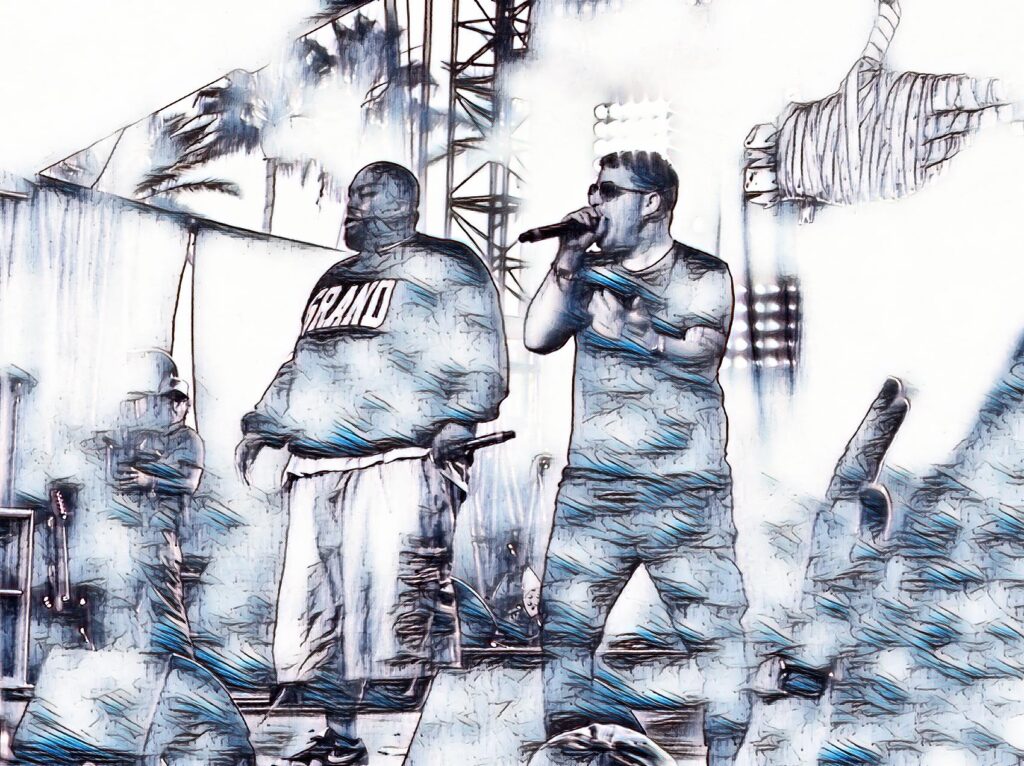


Run The Jewels, the dynamic duo of Killer Mike and El-P, has undeniably earned their spot among the greatest rap groups. Though as a duo they are relatively young compared to most of the legendary acts on this list, their placement here is well-deserved.
Before teaming up, both Killer Mike and El-P had already made significant marks in the Hip Hop world. Their collaboration began with Killer Mike’s 2012 album R.A.P. Music, where their incredible synergy was off the hook. The partnership’s success paved the way for the creation of Run The Jewels. Their self-titled 2013 debut Run The Jewels hit hard, with tracks like “Run The Jewels,” “Banana Clipper,” and “DDFH” blending aggressive beats with sharp social commentary.
The duo’s 2014 follow-up, Run The Jewels 2, continued this momentum and even improved on the first one, offering tracks such as “Blockbuster Night Part 1,” “Oh My Darling Don’t Cry, ” and “Close Your Eyes (And Count to F**k)” that highlighted their unique energy and incisive lyrics.
Their third release, Run The Jewels 3 (2016), furthered their reputation with powerful cuts like “Talk to Me,” “Hey Kids, ” and “Legend Has It.” The fourth album, RTJ4, maintained their high standards with tracks like “Yankee and the Brave,” “Ooh La La,” and “Walking in the Snow,” showing their ongoing commitment to addressing pressing social issues.
Run The Jewels’ music is characterized by its sharp lyricism and a wall-of-sound production style reminiscent of the Bomb Squad’s work with Public Enemy. Both Killer Mike and El-P brought extensive legacies to their collaboration, with Killer Mike’s best solo LP R.A.P. Music and El-P’s solo catalog and production credits on classics like Company Flow’s Funcrusher Plus (1997) and Cannibal Ox’s The Cold Vein (2001). These achievements, combined with their groundbreaking work as Run The Jewels, establish them as a crucial part of Hip Hop’s landscape.
16. UGK



UGK, the powerhouse duo from Port Arthur, Texas, is a cornerstone of Southern Hip Hop. Formed in 1987, UGK brought together Chad Butler, known as Pimp C, and Bernard Freeman, better known as Bun B. Their partnership, which started in local groups like Four Black Ministers, evolved into a groundbreaking collaboration that changed the landscape of Southern rap.
Their debut album, Too Hard to Swallow (1992), showcased their unique Southern flavor, blending gritty storytelling with deep, soulful beats. Pimp C’s production skills and Bun B’s sharp lyrics made a powerful combination, and their influence quickly spread through Texas and beyond. The 1994 follow-up, Super Tight, continued the duo’s upward trajectory, featuring the duo’s characteristic blend of braggadocio and street narratives.
The two reached new heights with Ridin’ Dirty (1996), widely considered their magnum opus. This album broke into the Billboard 200 and solidified UGK’s status in Hip Hop. Tracks like “One Day” and “Diamonds & Wood” became instant classics, depicting life’s harsh realities with a Southern twist. Their sound—marked by Pimp C’s live instrumentation and Bun B’s raw, introspective verses—captured the essence of the Gulf Coast’s urban experience.
A major milestone came in 1999 with their collaboration on Jay-Z’s “Big Pimpin’.” This track expanded UGK’s reach and introduced their style to a broader audience, earning them a prominent spot in the national spotlight. Their influence was further underscored by the 2000 hit “Sippin’ on Some Syrup” with Three 6 Mafia.
Despite facing challenges, including Pimp C’s imprisonment and the disappointing reception of Dirty Money (2001), UGK’s legacy continued to grow. Their 2007 album Underground Kingz marked a triumphant return, topping the Billboard 200 and featuring the acclaimed “Int’l Players Anthem (I Choose You)” with OutKast.
Tragically, on December 4, 2007, Pimp C was found dead in a hotel room due to an accidental overdose of codeine and promethazine. His passing was a profound loss for the Hip Hop community and his fans. Despite this devastating blow, Bun B continued to honor Pimp C’s legacy. Their final studio album, UGK 4 Life (2009), reflected their enduring influence and dedication to Southern rap.
15. Cypress Hill
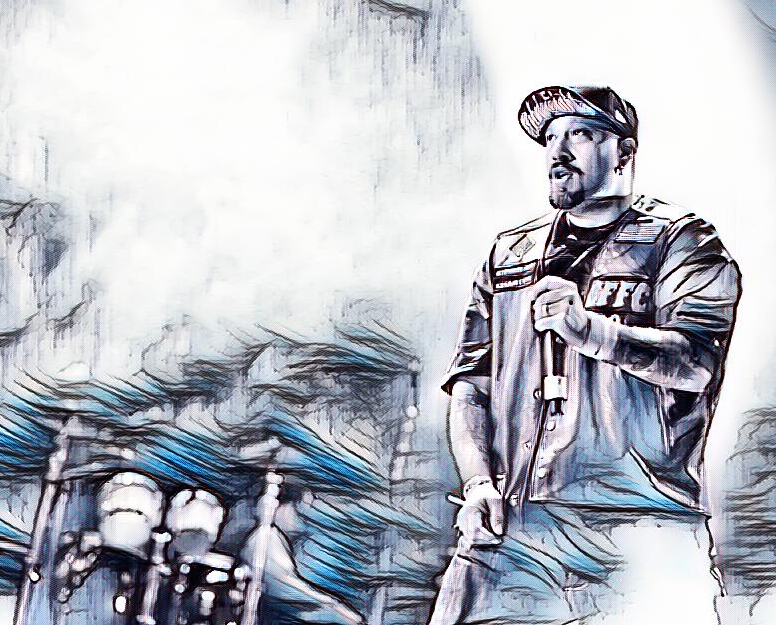


Cypress Hill is one of Hip Hop’s most influential and groundbreaking groups. Formed in 1988 in South Gate, California, the group began as DVX, before rebranding to Cypress Hill—a nod to a street in their hometown. The original lineup included B-Real, Sen Dog, DJ Muggs, and later, percussionist Eric Bobo. Their unique blend of styles and outspoken attitudes reshaped Hip Hop and popular culture.
With their eponymous debut in 1991, Cypress Hill captured attention with their raw, gritty sound and innovative use of bilingual lyrics. Tracks like “How I Could Just Kill a Man,” “Hand on the Pump,” and “The Phuncky Feel One” introduced their signature sound—B-Real’s distinctive nasal voice paired with Sen Dog’s gruff delivery and DJ Muggs’ eerie, bass-heavy production. Their second album, Black Sunday (1993), expanded their reach with iconic tracks such as “Insane in the Brain” and “I Wanna Get High,” going multi-platinum, and solidifying their place in rap history.
Beyond their music, Cypress Hill became cultural trailblazers by embracing and promoting cannabis culture at a time when it was far from mainstream. Their advocacy helped shift public perceptions and opened doors for discussions about marijuana use in Hip Hop. The group’s influence extended into their live performances, where they became known for their electrifying stage presence and unique incorporation of percussion, thanks to Eric Bobo.
Despite various lineup changes and a musical evolution that included a foray into rock with Skull & Bones (2000), Cypress Hill’s impact never waned. Their ability to blend genres while maintaining their essence has kept them relevant for decades. With over 30 years of groundbreaking work, Cypress Hill’s contribution to Hip Hop and culture remains immense, exemplifying their role as innovators and icons.
In a full-circle moment that underscores their longevity, Cypress Hill’s performance with the London Symphony Orchestra at London’s Royal Albert Hall in July 2024 echoes a memorable skit from their appearance in the 1996 “Homerpalooza” episode of The Simpsons. In that episode, the group humorously imagined ordering the London Symphony Orchestra while high, only for the dream to become reality decades later. This remarkable collaboration with one of the world’s premier classical ensembles is evidence of their sustained relevance and ability to bridge genres and generations, proving that Cypress Hill remains a dynamic force in music and popular culture.
14. Mobb Deep
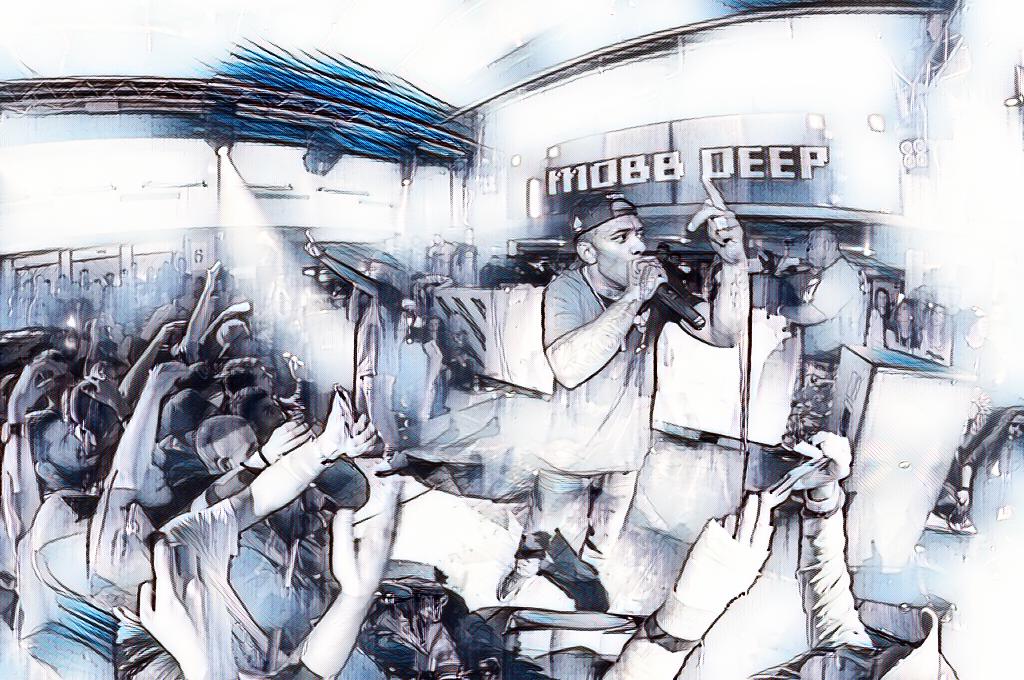


Mobb Deep, the iconic duo from Queensbridge, New York, holds a prominent place in the annals of East Coast Hip Hop. Comprised of Prodigy (Albert Johnson) and Havoc (Kejuan Muchita), Mobb Deep made an indelible mark with their gritty, unapologetic portrayal of street life. Their journey began with the unpolished Juvenile Hell in 1993, an album that, while not a commercial success, displayed their raw potential and set the stage for their future impact.
The duo truly revolutionized the genre with their sophomore album The Infamous, released in 1995. This album is rightfully hailed as a cornerstone of 90s East Coast rap, featuring the now-legendary track “Shook Ones Pt. II.” This song’s haunting beat and Prodigy’s vivid, intense lyrics captured the essence of urban struggle, setting a new benchmark for the genre. The Infamous was notable for its dark, brooding soundscapes and unapologetic storytelling, influencing countless artists who followed.
Mobb Deep’s evolution continued with Hell on Earth in 1996. While the album refined their style, it stayed true to their hardcore roots and featured hits that cemented their dominance in the rap game. The duo’s fourth album was Murda Muzik in 1999, an album that, despite some leaks and delays, achieved platinum status. Tracks like “Quiet Storm” became instant classics, demonstrating their ability to craft anthems that resonated with a wide audience.
However, the early 2000s brought challenges, including a high-profile feud with Jay-Z. The 2001 album Infamy reflected a shift in their sound, incorporating more commercial elements. The change sparked mixed reactions among fans, highlighting the tension between maintaining artistic integrity and appealing to a broader audience.
On June 20, 2017, the Hip Hop community suffered a profound loss with the death of Prodigy from complications related to sickle cell anemia. Despite this, Havoc has continued to honor Prodigy’s legacy, and Mobb Deep’s influence endures. Their raw energy and lyrical prowess ensure their place among the greatest rap groups of all time, celebrating their contribution to the genre with each passing year.
13. Geto Boys



Geto Boys, hailing from Houston, Texas, are indisputably one of the most influential and controversial rap groups in Hip Hop history. Their placement on our list of the Top 50 Greatest Rap Groups of All Time is a recognition of their groundbreaking contributions to the genre and their role in putting Southern Hip Hop on the map.
The group’s most iconic lineup – Scarface, Willie D, and Bushwick Bill – revolutionized rap music with unapologetically raw and graphic lyrics. Their unflinching approach to topics like violence, sex, drugs, and psychological turmoil set a new standard for hardcore rap and laid the foundation for what would become known as horrorcore.
Geto Boys’ 1991 album We Can’t Be Stopped marked a turning point in their career. The album’s cover, featuring an injured Bushwick Bill being wheeled through a hospital by his groupmates, became an iconic image in Hip Hop. More importantly, it contained “Mind Playing Tricks on Me,” a haunting exploration of paranoia and mental health that remains one of the most powerful Hip Hop tracks ever recorded.
Their controversial content often landed them in hot water. Their 1990 self-titled (remix) album faced distribution issues due to its extreme lyrical content, particularly tracks like “Mind of a Lunatic” and “Assassins.” This controversy, however, only fueled their popularity and cemented their status as rap outlaws.
Throughout their career, Geto Boys consistently pushed the envelope, influencing countless artists and helping to establish the South as a major force in Hip Hop. Their impact can be heard in the work of later Southern rap icons like OutKast, UGK, and Goodie Mob. Despite lineup changes and hiatuses, Geto Boys maintained their relevance and quality over the years. Later career albums The Resurrection (1996) and The Foundation (2005) proved their enduring ability to create compelling, hard-hitting Hip Hop.
Geto Boys paved the way for Rap-A-Lot Records to become a powerhouse in Southern Hip Hop and helped establish Houston as a major Hip Hop hub. Tragically, the group’s run ended with the passing of Bushwick Bill in 2019. However, the impact of Geto Boys on Hip Hop culture will continue to reverberate for decades to come, securing their place of honor here.
12. Beastie Boys



The Beastie Boys are a legendary force in Hip Hop, shaping the genre in ways few could have predicted. Formed in New York City in 1981, the group originally started as a punk rock band but quickly pivoted towards Hip Hop, creating a sound that was entirely their own. Comprised of Adam “MCA” Yauch, Michael “Mike D” Diamond, and Adam “Ad-Rock” Horovitz, the trio combined their love for hardcore punk with the emerging sound of Hip Hop, blending genres in a way that captivated audiences from their early days.
Their debut album, Licensed to Ill (1986), became an instant classic. Tracks like “(You Gotta) Fight for Your Right (to Party!)” and “No Sleep Till Brooklyn” turned the Beastie Boys into household names, resonating with the rebellious spirit of the youth of the 1980s. The album was a commercial success, marking the first time a rap album topped the Billboard 200, and it sold over 9 million copies in the United States alone. The raucous energy and humor of Licensed to Ill made it a cultural phenomenon, connecting with both rap and rock audiences alike.
Despite the massive success of their debut, the Beastie Boys didn’t rest on their laurels. With their second album, Paul’s Boutique (1989), they shifted gears, creating a project wildly different from their first. Produced by the Dust Brothers, the album was a dense collage of samples, spanning genres and decades of music. While it wasn’t an immediate commercial hit, Paul’s Boutique eventually gained recognition as one of the most innovative and influential albums in Hip Hop history.
Throughout the 1990s, the Beastie Boys continued to grow artistically with Check Your Head (1992) and Ill Communication (1994). These projects saw the group returning to their roots as musicians, playing their own instruments and incorporating elements of jazz, funk, and soul into their music. Tracks like “So What’cha Want” and “Sabotage” became iconic Beastie Boys anthems.
The Beastie Boys maintained their relevance with albums like Hello Nasty (1998) and To the 5 Boroughs (2004), the latter reflecting their deep connection to New York City, and a love for pure Hip Hop. Even as they explored new sounds, the group’s wit, creativity, and dedication to their craft never wavered.
In 2012, the Beastie Boys were inducted into the Rock and Roll Hall of Fame, a fitting tribute to a group that had reshaped the musical landscape. Sadly, that same year, Adam Yauch passed away, marking the end of an era. But with a career that spanned over three decades, the Beastie Boys remain one of the most important and innovative groups in the history of music.
11. Boogie Down Productions
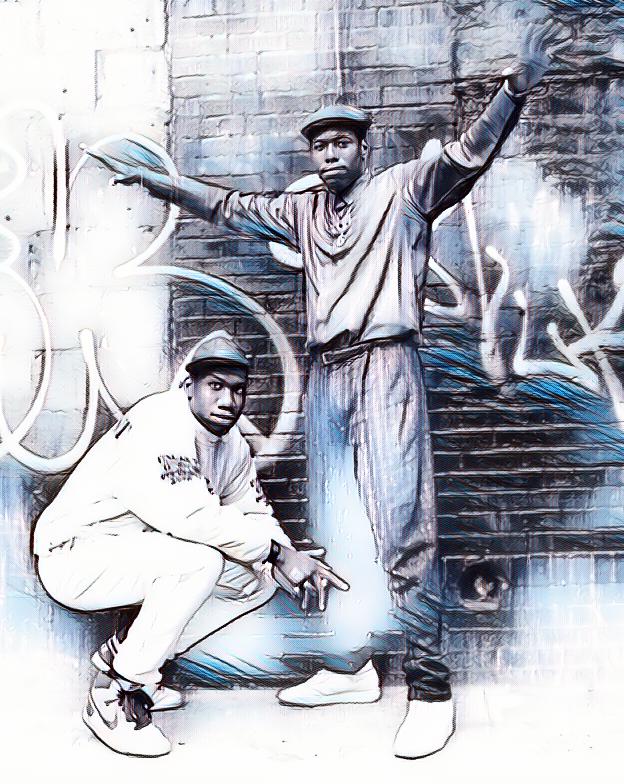


Boogie Down Productions (BDP), led by the charismatic and socially conscious KRS-One, emerged in the late 1980s as a force that reshaped Hip Hop’s role in the cultural landscape. Known for their potent mix of hard-hitting beats, street-level narratives, and a commitment to addressing the harsh realities of urban life, BDP was instrumental in pushing Hip Hop beyond entertainment, transforming it into a vehicle for social commentary and political activism.
The group’s debut album, Criminal Minded (1987), marked a significant moment in Hip Hop history. It was raw, gritty, and unapologetic, reflecting the turbulent environment of the South Bronx, where KRS-One honed his craft. The album not only introduced the world to KRS-One’s incisive lyricism but also showcased the innovative production skills of DJ Scott La Rock (with help from the uncredited Ced Gee of Ultramagnetic MCs fame).
Tragically, Scott La Rock’s life was cut short shortly after the release of Criminal Minded. His death had a profound impact on KRS-One, who chose to carry on BDP’s mission in his friend’s honor. With the release of By All Means Necessary in 1988, KRS-One fully embraced his role as “The Teacha.” This album was a defining moment for BDP, pivoting from the street tales of Criminal Minded to a more socially conscious approach. Tracks like “My Philosophy” and “Stop the Violence” addressed issues like police brutality, systemic racism, and the need for unity within the Hip Hop community.
BDP’s third album, Ghetto Music: The Blueprint of Hip Hop (1989), continued to push intellectual boundaries, exploring themes of black empowerment and social justice. KRS-One’s lyrics were sharper than ever, dissecting the flaws of American society while urging his listeners to seek knowledge and empowerment. The album solidified BDP’s reputation as one of Hip Hop’s most influential groups, with KRS-One becoming a respected figure both within and outside the Hip Hop community.
Despite facing criticism for the more didactic tone of Edutainment (1990), KRS-One and BDP remained committed to their message. Even when commercial Hip Hop began to shift towards more mainstream, pop-oriented sounds, BDP held firm to their principles, delivering hard-hitting, thought-provoking content, evidenced by tracks like “Black Man in Effect,”, “Beef,” and “Love’s Gonna Get’cha.” The group’s final album, Sex and Violence (1992), was a return to their hardcore roots, reaffirming their status as pioneers of socially conscious rap.
Boogie Down Productions (BDP) was as much a collective as it was a group, with its membership evolving throughout its existence. While KRS-One was the only constant member, BDP was originally founded by KRS-One and DJ Scott La Rock, with producer Lee Smith joining shortly after to help craft the iconic sound of Criminal Minded. Over the years, BDP’s roster included a wide range of talents, from Ced Gee of Ultramagnetic MC’s to D-Nice, KRS-One’s younger brother Kenny Parker, Ms. Melodie, Heather B., DJ Red Alert, and many others who contributed to the group’s dynamic and ever-expanding sound. This fluid membership allowed BDP to incorporate a variety of influences and styles, keeping the music fresh and relevant throughout their career.
However, by 1993, KRS-One decided to continue his musical journey under his own name, effectively bringing BDP to a close. His debut solo album, Return of the Boom Bap, was a continuation of the work he had done with BDP, carrying the same spirit of hard-hitting, socially conscious Hip Hop. The shift from BDP to KRS-One as a solo artist didn’t signify a change in mission but rather a change in branding; KRS-One remained committed to using his platform to educate and empower, doing essentially the same work he had done with BDP, only now under his own name. This transition allowed KRS-One to maintain his voice and influence in the Hip Hop community while exploring new creative avenues on his own terms.
10. Eric B & Rakim
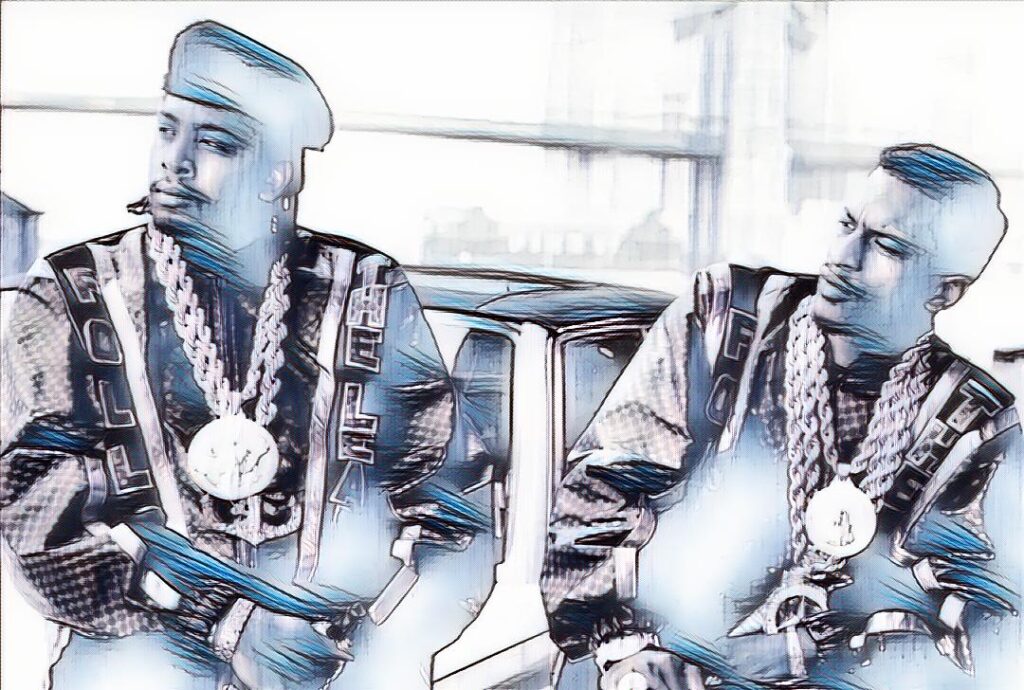


When discussing the greatest rap groups of all time, Eric B & Rakim invariably enter the conversation. This powerhouse duo revolutionized Hip Hop during its Golden Age.
Emerging in the mid-1980s, Eric B & Rakim quickly established themselves as trailblazers. Their debut single, the Marley Marl-produced “Eric B. Is President,” was a declaration. Rakim’s calm but commanding flow, packed with intricate rhymes, was like nothing anyone had heard before.
Their debut album, Paid in Full, dropped in 1987 and immediately sent the Hip Hop world shockwaves: Rakim’s complex rhyme schemes and poetic approach to lyricism elevated rap to new heights. And while Rakim’s lyrical prowess is unbeatable, the duo’s musical backdrop deserves praise too. The beats on their debut were groundbreaking, heavily sampling James Brown and introducing a funkier, more sophisticated sound to Hip Hop. Their follow-up albums, Follow the Leader (1988), Let the Rhythm Hit ‘Em (1990), and Don’t Sweat the Technique (1992), continued to push Hip Hop forward.
It is worth noting that Eric B’s role in the duo has been subject to some scrutiny over the years. While initially credited as the DJ and producer, it has become clearer that much of the production on their albums was handled by Rakim himself or other producers like Marley Marl, Large Professor, and the late Paul C, sometimes without proper credit. This has led to questions about Eric B’s exact contributions to the duo’s iconic sound.
Yet, this doesn’t diminish the quality of their albums. The duo’s four records —Paid in Full, Follow the Leader, Let the Rhythm Hit ’Em, and Don’t Sweat the Technique—all are essential listens for anyone who wants to understand the evolution of Hip Hop. The first two are stonecold classics, the latter two albums, while sometimes overlooked, are also outstanding.
The impact of Eric B & Rakim goes beyond record sales or chart positions. They carved out a space in Hip Hop that hadn’t existed before, influencing not just the sound but the entire approach to making rap music. They didn’t follow trends; they set them. And while debates over production credits might cloud Eric B’s legacy slightly, it’s impossible to overlook what the duo accomplished together.
9. The Roots
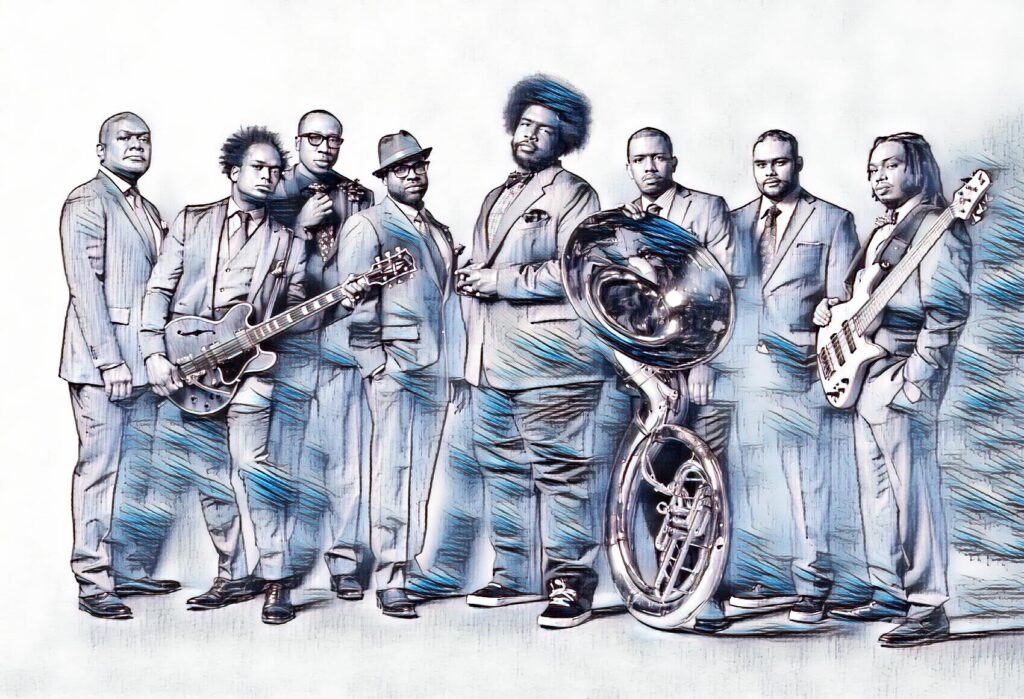


The Roots have long been a standout in Hip Hop, redefining the genre with their commitment to live instrumentation. Formed by Tariq “Black Thought” Trotter and Ahmir “Questlove” Thompson, their blend of rap and jazz began with Organix (1993) and quickly evolved. Their sophomore release, Do You Want More?!!!??! (1995), set a new bar with its inventive use of live instruments instead of samples, while Illadelph Halflife (1996) and Things Fall Apart (1999) became quintessential records in their discography, combining insightful lyrics with a rich, organic sound.
Phrenology (2002) and The Tipping Point (2004) continued to push the envelope, with the latter marked by its more polished, radio-friendly approach. Game Theory (2006) and Rising Down (2008) showcased their ability to address social issues with a raw, introspective edge, capturing the spirit of their era.
Even as they became a staple on *The Tonight Show Starring Jimmy Fallon*, their music continued to innovate. How I Got Over (2010) and Undun (2011) were acclaimed for their conceptual depth and narrative complexity. The Roots’ final project before the passing of longtime member Malik B. in 2020 was …And Then You Shoot Your Cousin (2014), an experimental and thought-provoking album that concluded an era of dynamic and influential work.
The Roots’ legacy is a testament to their unyielding creativity and their ability to blend genres and styles in ways that continue to resonate. Their evolution as a group has left a lasting impact on Hip Hop, proving that innovation and artistry can thrive in tandem with mainstream success.
8. Gang Starr
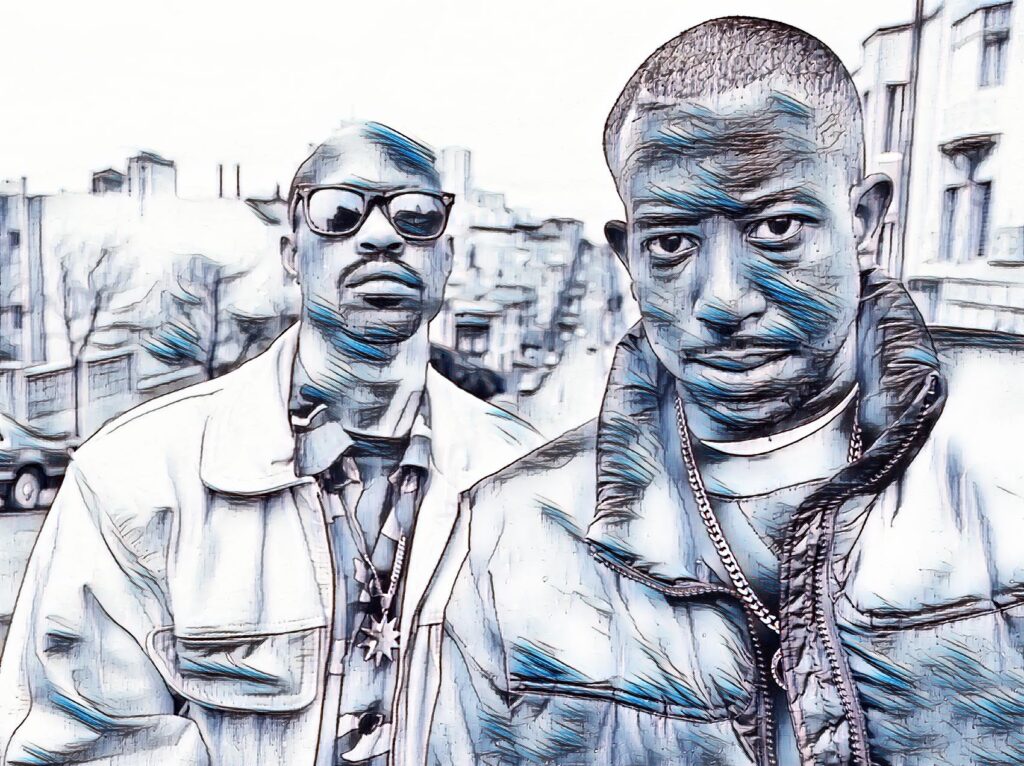


Gang Starr’s place in Hip Hop history is marked by their unique fusion of thoughtful lyrics and masterful production. The duo, consisting of Guru (Gifted Unlimited Rhymes Universal) and DJ Premier, started making waves with their debut, No More Mr. Nice Guy (1989). While this first album laid the groundwork, their subsequent work truly highlighted their creative synergy.
Step in the Arena (1991) was a breakthrough, showcasing Guru’s deep voice and intelligent storytelling as the perfect foil for DJ Premier’s groundbreaking beats. Tracks like “Just To Get A Rep,” “Check The Technique” and “Step In The Arena” signaled a new era in Hip Hop with their blend of introspection and innovative sound.
Daily Operation (1992) continued to impress, delivering classic joints such as “Ex Girl To Next Girl” and “Take It Personal.” This album exemplified Gang Starr’s ability to mix socially conscious and braggadocious themes with infectious and compelling beats, a hallmark of their style.
Hard to Earn (1994) took their sound even further, featuring iconic tracks like “Mass Appeal” and “Code Of The Streets.” This album reinforced their reputation for merging personal reflections with broader social issues, all while delivering a hard-hitting sonic experience. By the time Moment of Truth (1998) was released, Gang Starr had solidified their status as top players in the Hip Hop game. Four albums in the 1990s, four straight classics – a level of consistency few acts can boast.
After a period of relative silence, Gang Starr returned with The Ownerz (2003). While not as groundbreaking as the duo’s 90s classics, it maintained their reputation with solid tracks demonstrating their enduring chemistry and skill. Their final album, One of the Best Yet (2019), was a poignant conclusion to their career, featuring posthumous verses from Guru and capturing the essence of Gang Starr’s influential sound.
Individually, both Guru and DJ Premier were forces to be reckoned with. Guru’s smooth, monotone flow and introspective lyrics helped define the sound of East Coast rap in the ’90s. His early work showcased battle-rap prowess, but as he matured, his lyrics became more reflective and philosophical. Guru’s unique style differentiated him from his contemporaries, with his steady, almost nonchalant flow allowing his intricate wordplay and profound observations to take center stage. This approach turned Guru into a Hip Hop philosopher, packing each verse with wisdom about life, music, and society.
Beyond Gang Starr, Guru’s solo “Jazzmatazz” series broke new ground, blending Hip Hop with live jazz instrumentation. Sadly, Guru passed away in 2010 at 48, but his evolution as an artist and impact on the culture cemented his place as one of the greatest rappers in Hip Hop history.
DJ Premier’s reputation as one of Hip Hop’s greatest producers is rooted in his mastery of beat-making and sampling. His knack for creating gritty, soulful soundscapes resulted in instantly recognizable beats, thanks to his skillful use of breakbeats, jazz samples, and sharp cuts. Premier’s influence extends across countless classic tracks and collaborations, from Nas’s Illmatic to Jay-Z’s Reasonable Doubt. His ability to craft complex rhythms and layered textures has shaped the sound of East Coast Hip Hop and influenced a generation of producers.
Gang Starr’s discography is a profound example of how Hip Hop can blend lyrical depth with innovative production. Often overlooked in discussions about Hip Hop’s greatest groups, we have no doubts about putting them in the top 10 of this list. Their contributions to Hip Hop, both as a duo and as individual artists, will always stand as an example of authentic, intelligent rap music.
7. N.W.A
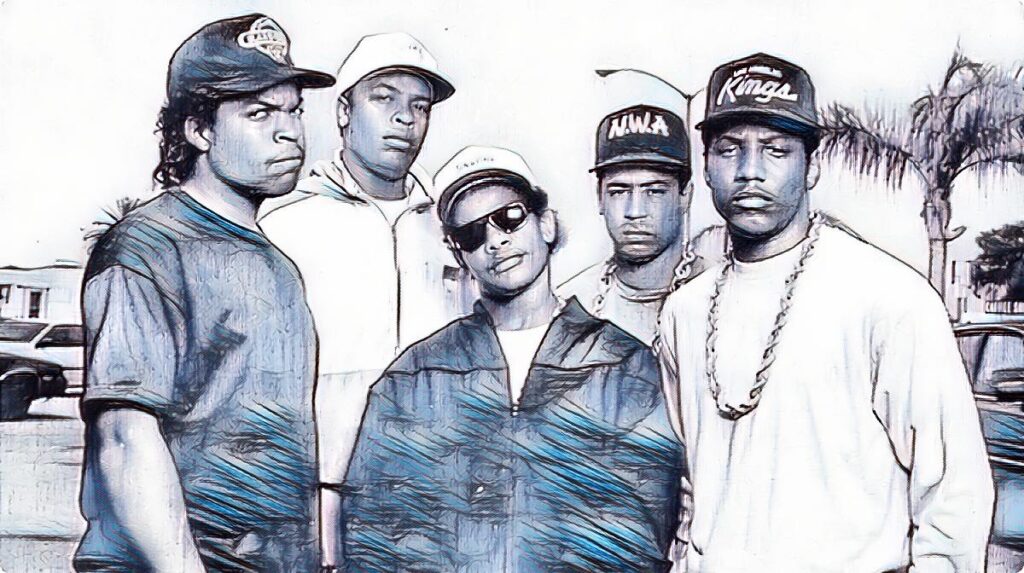


When N.W.A hit the scene in the late 1980s, they didn’t tiptoe around—they kicked the door down. Hailing from Compton, Los Angeles, these five young men—Eazy-E, Dr. Dre, Ice Cube, MC Ren, and DJ Yella—brought the raw realities of their world to the forefront of American culture. They weren’t trying to be role models or media darlings. They were storytellers, relaying the anger, frustration, and defiance simmering in the streets where they lived.
Straight Outta Compton was an eruption. Released in 1988, this record captured the attention of an America that was comfortable ignoring places like Compton. But N.W.A’s music made it impossible to look away. Songs like “F*** tha Police” didn’t mince words—they were open letters, dripping with rage, aimed directly at the power structures that oppressed Black communities. And this wasn’t about glamorizing violence; it was about survival and resistance, expressed in the only way they knew how.
Ice Cube’s lyrics cut through the noise like a knife, each verse a vivid snapshot of life in a world that felt like a warzone. Dr. Dre, already showing the genius that would later redefine Hip Hop, laid down beats that were both hard and hypnotic, merging the sounds of the street with a production style that was gritty but polished. MC Ren brought street attitude with his powerful flow, and Eazy-E, with his unmistakable voice, gave the group its public face, delivering verses with a mix of swagger and street cred that resonated with fans and scared the hell out of everyone else.
After Straight Outta Compton, Ice Cube left the group over money disputes, and the chemistry changed. Ice Cube-less N.W.A’s 1990 follow-up album, Efil4zaggin, pushed the controversy envelope even further than Straight Outta Compton did, with harder beats and harsher lyrics – but the album missed the intelligence and the sharp social commentary that Ice Cube brought to the table and depended more on shock value. Still, it showed that N.W.A wasn’t about to back down, even as they evolved into something darker and more controversial.
N.W.A’s journey came to a definitive close when Dr. Dre, the group’s sonic architect, also decided to leave over money disputes and creative differences. By 1991, tensions within the group had reached a boiling point. Dre, who had already begun to establish himself as a force beyond N.W.A, grew increasingly frustrated with the financial arrangements that seemed to benefit others (Eazy-E and the group’s manager Jerry Heller) more than himself. Dre’s exit wasn’t just the unraveling of N.W.A, it was also the beginning of a new chapter in Hip Hop history—one that would see him redefine the rap game with The Chronic, solidifying his legacy far beyond his days with N.W.A.
N.W.A’s time as a group was brief, but their impact was seismic. They set the stage for West Coast gangsta rap and influenced a generation of artists who saw in them the possibility of turning their truths into powerful art. Today’s Hip Hop still echoes with the sounds and messages they laid down, proof that N.W.A didn’t just make music—they made history.
6. Run DMC
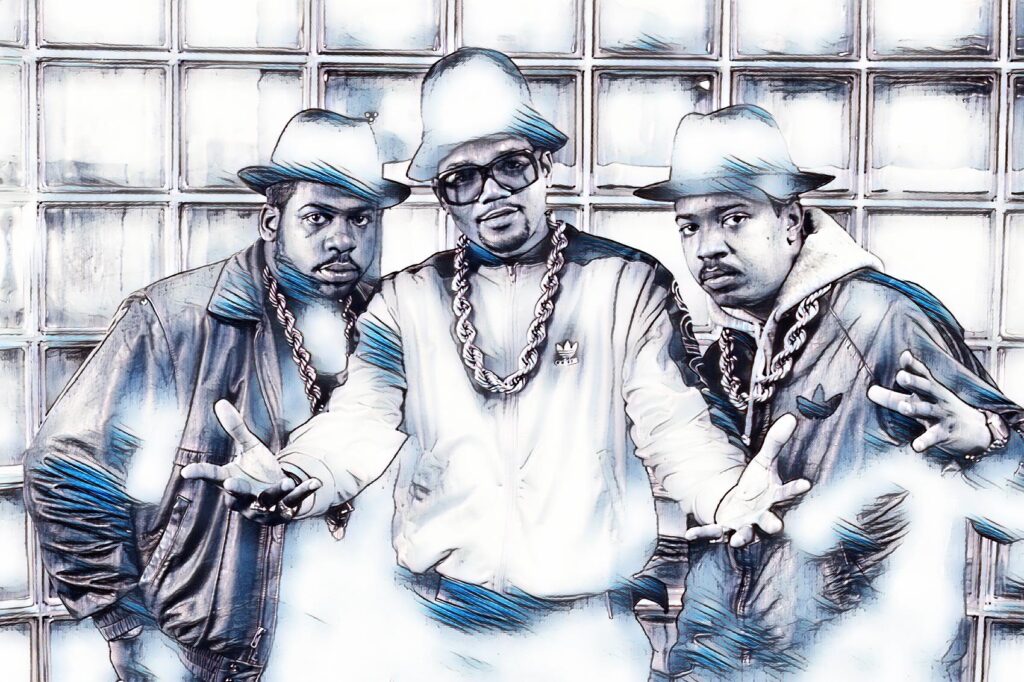


Run-DMC arrived on the scene like a thunderclap, completely reshaping the sound and image of Hip Hop. Hailing from Hollis, Queens, Joseph “Run” Simmons, Darryl “D.M.C.” McDaniels, and Jason “Jam Master Jay” Mizell introduced a new era of rap that was tough, minimalistic, and unapologetically streetwise. Their music didn’t follow the trends of the time but instead carved out a raw, powerful niche that changed the game forever.
Their 1983 debut single, “It’s Like That”/”Sucker M.C.’s,” was a shot across the bow for Hip Hop. The track featured relentless beats and hard-edged rhymes, setting a new standard for what rap could be. The sound was stripped down, focused on the essentials: heavy bass, pounding drums, and razor-sharp lyrics. This approach connected deeply with listeners who saw themselves reflected in the gritty realism of their music. The impact was immediate and profound, setting the stage for their first album, Run-D.M.C., released in 1984. This record became the first rap album to go gold, establishing Run-DMC as a dominant force in a new genre.
Run-DMC’s influence extended far beyond their sound. Their fashion—unadorned black fedoras, leather jackets, and Adidas sneakers without laces—became a visual symbol of the genre’s new attitude. Run-DMC embodied the street culture of New York, and their style was quickly adopted by fans across the country. More than just an aesthetic choice, their look represented a break from the flashy, glam-influenced styles of earlier acts, grounding Hip Hop in the realities of urban life.
The release of King of Rock in 1985 took their influence to new heights. The album, the first rap record to go platinum, bridged the gap between rock and rap, blending genres in a way that had never been done before. The title track became an anthem, showing that rap was not confined to any single genre or audience.
This fusion reached a peak with their third album, Raising Hell (1986), which included the landmark track “Walk This Way,” a collaboration with Aerosmith. The song and its music video were monumental, breaking down barriers between rap and rock while bringing Hip Hop to a global audience. Raising Hell went triple platinum, making it one of the best-selling rap albums of its time and cementing Run-DMC’s place in music history.
As the years went on, Run-DMC continued to evolve with albums like Tougher Than Leather (1988), navigating the changing landscape of Hip Hop while maintaining their unique voice, even as the rapidly transforming Hip Hop slowly – but surely – passed them by.
The senseless murder of Jam Master Jay in 2002 marked a somber chapter for the group and the broader Hip Hop community. His passing was a devastating loss, but it also underscored the lasting impact Run-DMC had had on the culture. The group’s legacy is etched in the annals of music history, not only for their groundbreaking achievements but for the path they forged for future generations of artists. Run-DMC didn’t merely participate in the evolution of Hip Hop—they were the architects of its rise to prominence.
5. Wu-Tang Clan
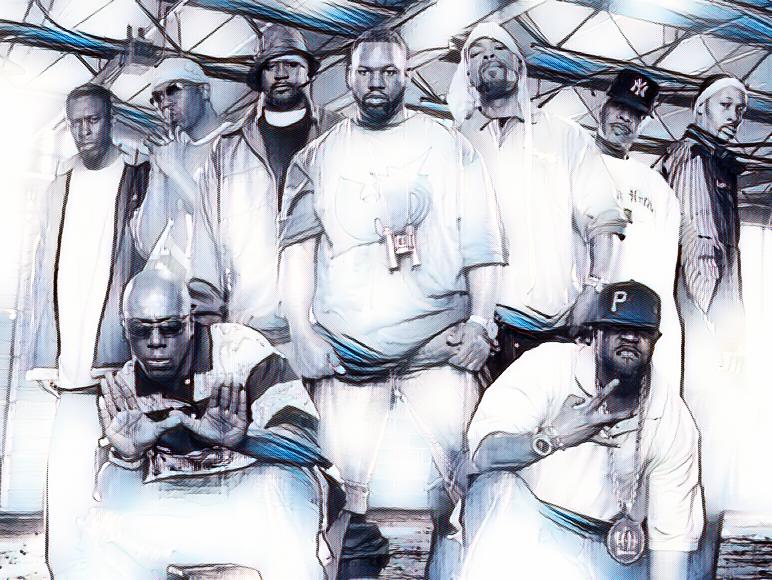


Wu-Tang Clan, landing firmly in the top 3 on our list of the Top 50 Greatest Rap Groups of All Time, revolutionized Hip Hop with their raw energy, innovative sound, and unparalleled lyrical prowess. Emerging from Staten Island in 1993, this nine-member collective redefined Hip Hop, both musically and commercially.
The Clan’s debut album, Enter the Wu-Tang (36 Chambers), hit the Hip Hop world like a thunderbolt. In an era dominated by West Coast G-funk, Wu-Tang’s gritty, minimalist production and kung-fu movie samples created a wholly unique sonic landscape. RZA’s visionary production provided the perfect backbone for the group’s diverse array of lyrical talent.
Each member brought something distinct to the table. Method Man’s gravelly voice and charismatic flow, Ol’ Dirty Bastard’s unpredictable energy, GZA‘s philosophical wordplay, Raekwon’s vivid street narratives, Ghostface Killah‘s abstract lyricism, Inspectah Deck‘s sharp metaphors, U-God’s deep vocals, Masta Killa’s measured delivery, and later, Cappadonna’s smooth style – all combined to form an unparalleled Hip Hop powerhouse.
Wu-Tang’s reach extended far beyond their group efforts. RZA’s innovative business model allowed each member to pursue solo careers with different labels, leading to a slew of classic albums. Raekwon’s Only Built 4 Cuban Linx (1995), GZA’s Liquid Swords (1995), and Ghostface Killah’s Ironman (1996) are all considered pinnacles of 90s Hip Hop.
The group’s sophomore album, Wu-Tang Forever (1997), debuted at number one on the Billboard 200, proving their massive crossover appeal. Subsequent group albums The W (2000), Iron Flag (2001), 8 Diagrams (2007) and A Better Tomorrow (2014) were less impactful but continued the Wu-Tang legacy.
Wu-Tang Clan introduced a new lexicon to the genre, mixing Five Percenter teachings, comic book references, and street slang into a unique vernacular. Beyond music, Wu-Tang became a global brand, venturing into clothing, video games, and even a one-of-a-kind album (Once Upon a Time in Shaolin) sold as a singular piece of art.
Despite personal conflicts and the tragic loss of Ol’ Dirty Bastard in 2004, Wu-Tang Clan’s legacy remains undiminished. Wu-Tang Clan’s innovative sound, lyrical dexterity, cultural impact, and business savvy have left an indelible mark on the rap game. From the slums of Shaolin to global recognition, Wu-Tang Clan truly is forever.
4. De La Soul
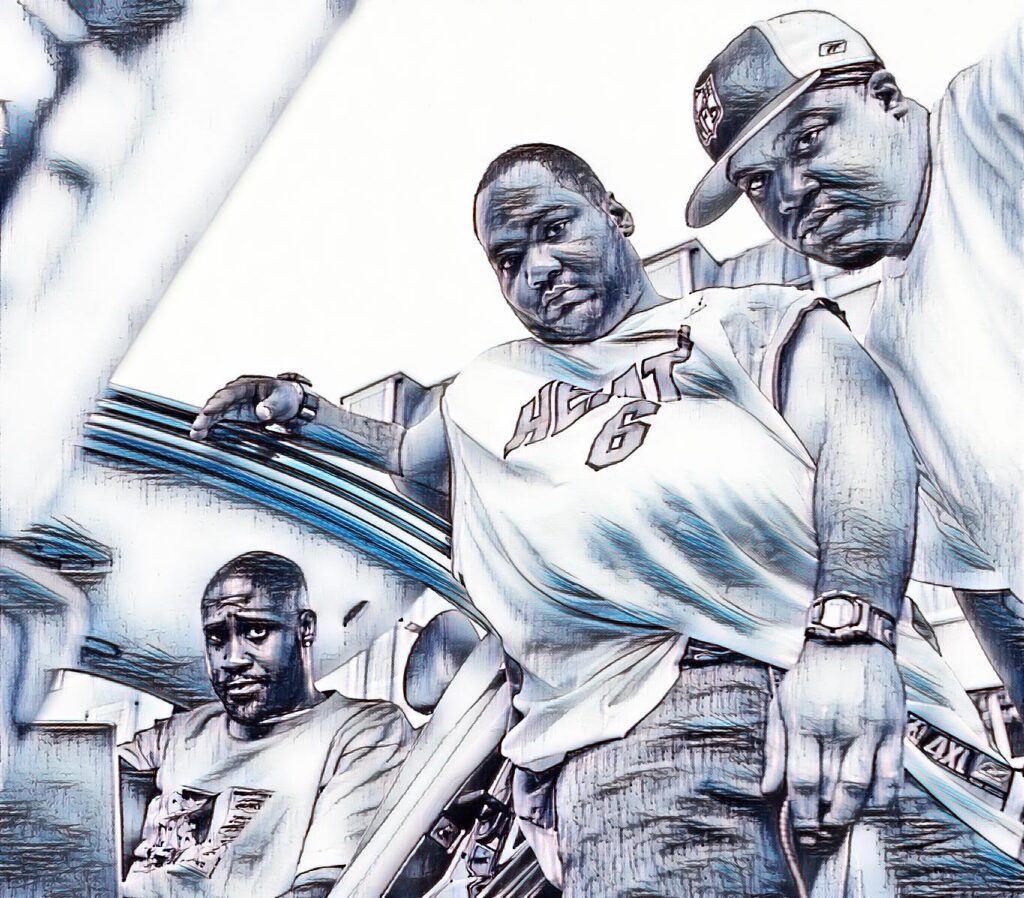


This innovative trio from Long Island – Posdnuos, Trugoy the Dove, and Maseo – revolutionized Hip Hop with their debut album 3 Feet High and Rising in 1989, ushering in a new era of creativity and positivity.
De La Soul’s debut introduced the concept of the “D.A.I.S.Y. Age” (Da Inner Sound, Y’all), which emphasized peace, love, and fun in an era when Hip Hop was increasingly focused on harder themes. The album’s eclectic sampling, drawing from sources as diverse as Johnny Cash and Parliament-Funkadelic, set a new standard for production in Hip Hop. Tracks like “Say No Go”, “Eye Know”, and “Me, Myself and I” became instant classics.
However, De La Soul was far from a one-trick pony. Their sophomore album, De La Soul Is Dead (1991), saw the group actively pushing against the “hippie” label that had been thrust upon them. The album’s darker, more introspective tone proved De La Soul’s versatility and willingness to evolve.
This trend continued with the Buhloone Mindstate (1993) and Stakes Is High (1996), both considered classics in their own right. These two albums saw De La Soul delving deeper into jazz-influenced production and tackling more serious themes while maintaining their signature wit and wordplay.
As the millennium turned, De La Soul originally planned a triple album series called Art Official Intelligence (AOI), with Mosaic Thump (2000) and Bionix (2001) as the first two installments. However, the third album in the series was never released due to ongoing struggles with Tommy Boy Records. For the next two years, the group only released singles and remixes, while dealing with label issues.
In 2004, De La Soul left Warner Bros. and released The Grind Date on Sanctuary/BMG Records. Although it wasn’t the third AOI album fans expected, it was critically acclaimed and featured collaborations with MF Doom, Ghostface Killah, and production from 9th Wonder and Madlib. In 2015, they used Kickstarter to fund their next album, and the Anonymous Nobody…, released in 2016.
Their innovative approach to sampling, while groundbreaking, also led to legal challenges that kept much of their catalog off streaming services for years. Tragically, Trugoy the Dove passed away in February 2023, mere weeks before De La Soul’s music finally became widely available on streaming platforms.
De La Soul’s consistent ability to deliver high-quality, innovative music over decades, their willingness to evolve while staying true to their roots, their positivity and profound influence on Hip Hop as a whole, and the overall quality of their catalog – with four stone cold classics released back to back – make them unquestionably one of the greatest rap groups of all time.
3. OutKast
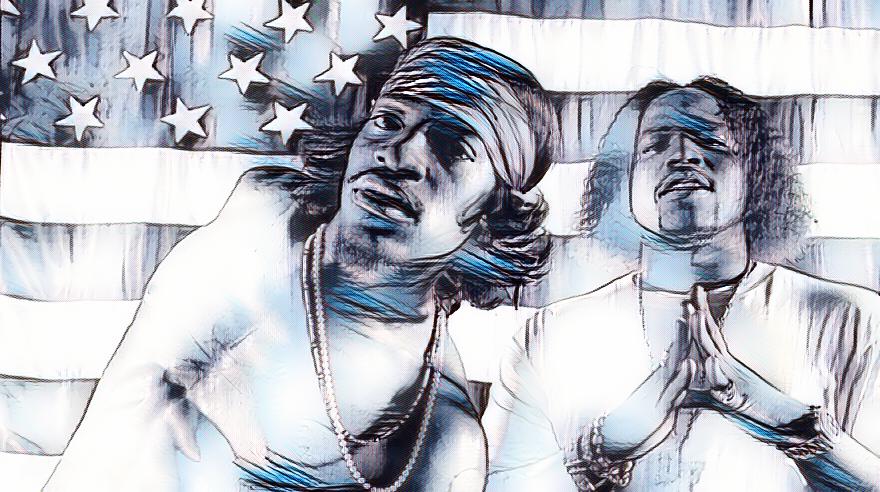


Let’s talk about OutKast, the duo that flipped Hip Hop on its head and made everyone’s ears perk up. André 3000 and Big Boi weren’t playing when they burst out of Atlanta in the early ’90s. These two had a vision, and they weren’t about to let anyone tell them how their music should sound.
When Southernplayalisticadillacmuzik dropped in ’94, OutKast came through with this funky, Southern-fried sound that had heads nodding everywhere. “Player’s Ball” – released in 1993 – hit number one on the rap charts, and suddenly, everyone was looking South.
But OutKast was never about staying in one lane. They kept evolving and kept pushing. ATLiens in ’96 took us on a spacey ride with tracks like “Elevators (Me & You),” slowing things down and proving they could flip styles at will. Then Aquemini hit in ’98, and damn if it wasn’t a masterpiece. André and Big Boi were in perfect sync, dropping mind-bending bars over eclectic instrumentals that sounded like they came from another dimension.
The new millennium saw OutKast go supernova. Stankonia (2000) gave us bangers like “B.O.B.,” “So Fresh, So Clean, “and “Ms. Jackson,” tracks that had the whole world singing along. And they weren’t done yet. Speakerboxxx/The Love Below in 2003 was a double album that let André and Big Boi shine individually. “Hey Ya!” became a timeless phenomenon, while “The Way You Move” kept the clubs rocking.
What made OutKast special was the contrast. Big Boi was the grounded realist with a razor-sharp flow, while André was the outlandish philosopher pushing the boundaries of style and sound. Together, they created a yin and yang that was pure magic. Even after they stopped dropping albums, OutKast’s influence never faded. André’s guest verses became events in themselves, and their 2014 reunion tour reminded everyone why they were legends.
From their early days as Atlanta teenagers to their status as Hip Hop icons, OutKast’s journey has been wild. As André once said, “Nothing lasts forever,” but OutKast’s legacy? In the pantheon of great rap groups, OutKast sits at the top, forever fresh, forever funky, forever changing the game.
2. A Tribe Called Quest
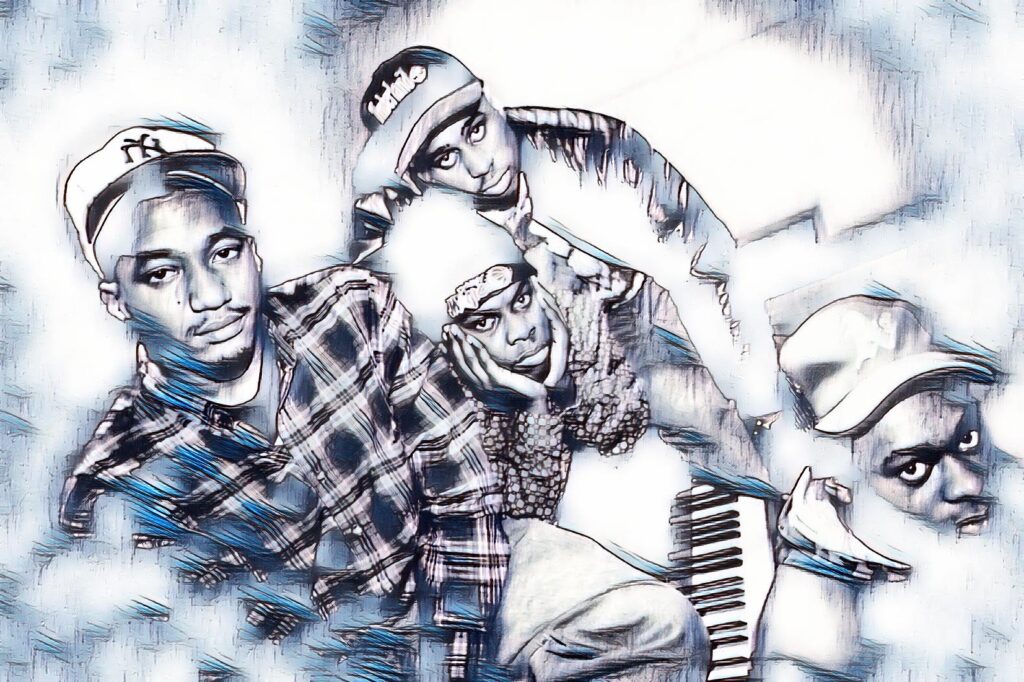


A Tribe Called Quest is one of the most legendary groups in Hip Hop history, beloved for their smooth blend of jazz-infused beats, intelligent lyrics, and a vibe that was both laid-back and thought-provoking. Formed in 1985, the group originally consisted of school friends Q-Tip, Phife Dawg, and Ali Shaheed Muhammad, with Jarobi White rounding out the crew as an honorary member. Hailing from Queens, New York, A Tribe Called Quest quickly distinguished themselves with a sound and style entirely their own.
Their debut album, People’s Instinctive Travels and the Paths of Rhythm, released in 1990, was a breath of fresh air in a Hip Hop scene often dominated by aggressive posturing and hard-hitting beats. Instead, ATCQ brought a new flavor to the table, mixing Afrocentric themes with jazz samples and funky basslines that felt as natural as a summer breeze. Songs like “Bonita Applebum,” “Can I Kick It?,” and “I Left My Wallet in El Segundo” not only introduced the world to their unique sound but also to their infectious energy and clever wordplay. This debut album laid a strong foundation for one of the most influential careers in music history.
Their sophomore release, The Low End Theory in 1991, truly elevated them to legendary status. This album was a masterclass in blending smooth, jazz-inflected beats with sharp, introspective lyrics. The group’s chemistry was undeniable, with Q-Tip and Phife Dawg bouncing off each other effortlessly. Tracks like “Check the Rhime,” “Jazz (We’ve Got),” and “Scenario” are Hip Hop classics that continue to be celebrated decades later.
With their third album, Midnight Marauders, released in 1993, ATCQ continued their streak of excellence. This record saw the group delve into harder beats and even more intricate lyricism. “Award Tour,” “Electric Relaxation,” and “Oh My God” became instant hits, and the album as a whole solidified ATCQ’s reputation as one of the most innovative and important groups in the rap game. Their music was socially conscious, deeply personal, and always incredibly cool.
By the time Beats, Rhymes & Life came out in 1996, A Tribe Called Quest was already a household name. This album, featuring contributions from the then-up-and-coming producer Jay Dee (later known as J Dilla), saw the group exploring new sonic territory while maintaining their core essence. Their final album before an extended hiatus, The Love Movement in 1998, was bittersweet, marked by the announcement that the group would be disbanding.
Phife Dawg’s untimely death in 2016 was a devastating blow, but the group honored his legacy with one final masterpiece, We Got It from Here… Thank You 4 Your Service. Released in late 2016, this album was a powerful and emotional farewell, featuring contributions from Phife and an impressive roster of guest artists. It was both a reflection on their past and a statement of defiance against the challenges they faced.
What makes A Tribe Called Quest truly special is their ability to create music that transcends time. They made Hip Hop that was smart, soulful, and, above all, authentic. Their impact on music and culture is huge, and their catalog remains a treasure trove of innovation and brilliance.
1. Public Enemy



Public Enemy, the Long Island-based rap group, sits atop our list as the undisputed champion of Hip Hop collectives. Their impact on the genre, and music as a whole, is colossal. From their formation in 1982 at Adelphi University to their induction into the Rock and Roll Hall of Fame in 2013, Public Enemy has consistently delivered powerful messages wrapped in innovative soundscapes.
At the core of Public Enemy’s success is the synergy between Chuck D and Flavor Flav. Chuck D brings a booming voice and razor-sharp lyrical content that cuts through the noise of mainstream media. His ability to articulate complex social and political issues within the confines of a rap verse is unparalleled. Flavor Flav, with his iconic clock necklace and wild persona, provides the perfect counterbalance to Chuck D’s intensity. Together, they create a yin and yang that’s both entertaining and thought-provoking.
The group’s sonic identity was initially crafted by their in-house production team the Bomb Squad, first presented on the group’s 1987 debut album Yo! Bum Rush The Show. Hank Shocklee, Keith Shocklee, Chuck D, and Eric “Vietnam” Sadler created a wall of sound that was unlike anything else in Hip Hop at the time. They layered samples from various genres – funk, jazz, and even metal – with sirens and other found sounds to create a chaotic yet cohesive backdrop for the group’s revolutionary rhymes.
Public Enemy’s sophomore album, It Takes a Nation of Millions to Hold Us Back (1988), is widely regarded as their masterpiece, and the best album in Hip Hop history as far as we are concerned. Tracks like “Don’t Believe the Hype,” “Black Steel in the Hour of Chaos,” and “Bring the Noise” showed their ability to blend hard-hitting beats with politically charged lyrics. The album was a critical and commercial success, proving Hip Hop could be entertaining and socially relevant.
Their follow-up, Fear of a Black Planet (1990), continued their streak of excellence. The album featured “Fight the Power,” which became the anthem for Spike Lee’s film “Do the Right Thing” and remains one of the most iconic protest songs in music history. Other tracks like “911 Is a Joke” addressed issues of racial inequality in emergency services, while “Welcome to the Terrordome” tackled media scrutiny and controversy head-on.
Public Enemy’s influence extended beyond their music. They brought the aesthetics and ideology of the Black Power movement into the Hip Hop sphere, drawing inspiration from groups like the Black Panthers. Their backup dancers, the Security of the First World, sported military-style uniforms and performed choreographed routines that paid homage to the dance moves of Stax and Motown artists.
Despite some controversy and setbacks, Public Enemy continued to evolve and create impactful music throughout the ’90s and beyond. Albums like Apocalypse 91… The Enemy Strikes Black (1991) and Muse Sick-n-Hour Mess Age (1994) may not have reached the commercial heights of their earlier work, but they maintained the group’s commitment to social commentary and musical innovation.
In the new millennium, Public Enemy has continued to release music and tour the world, proving their longevity in a genre often associated with youth. Their 2020 album What You Gonna Do When the Grid Goes Down? saw them return to Def Jam and collaborate with a range of artists, demonstrating their continued relevance and standing within the Hip Hop community.
Public Enemy’s legacy is indisputable. They’ve shown that rap can be a powerful tool for social change, inspiring countless artists to use their platform to address important issues. Their innovative production techniques expanded the sonic possibilities of Hip Hop, influencing producers across genres. And most importantly, they’ve consistently stood up for their beliefs, using their music to challenge systemic racism and inequality.
The combination of Chuck D’s powerful rhetoric, Flavor Flav’s energetic presence, and the Bomb Squad’s groundbreaking production created a sum greater than its parts. For HHGA, Public Enemy is the greatest Hip Hop group of all time.
Honorable Mentions | 51/100
51. Arrested Development
52. DJ Jazzy Jeff & The Fresh Prince
53. Slum Village
54. The Diplomats
55. Freestyle Fellowship
56. Czarface
57. Tha Doggpound
58. Heavy D & The Boyz
59. 2 Live Crew
60. Black Star
61. Jungle Brothers
62. Blackalicious
63. Stetsasonic
64. D12
65. Poor Righteous Teachers
66. 3rd Bass
67. Black Star
68. Camp Lo
69. Army Of The Pharaohs
70. Shabazz Palaces
71. Das EFX
72. Tha Alkoholiks
73. Dead Prez
74. Digable Planets
75. Beatnuts
76. Whodini
77. Awon & Phoniks
78. Kid N Play
79. Nice & Smooth
80. Main Source
81. Nappy Roots
82. Leaders Of The New School
83. Living Legends
84. Mantronix
85. Gravediggaz
86. Showbiz & AG
87. Company Flow
88. Slaughterhouse
89. Ugly Heroes
90. Westside Connection
91. G-Unit
92. Capone N Noreaga
93. Zion I
94. Qwel & Maker
95. X-Clan
96. Black Sheep
97. Booyaa Tribe
98. Doomtree
99. Fat Boys
100. Treacherous Three
As we wrap up this journey through the pantheon of Hip Hop’s greatest groups, it’s clear that the power of collaboration has been a driving force in the genre’s evolution. From the streets to the studios, these crews have pushed each other to new heights, creating music that has stood the test of time and influenced generations of artists.
This list is more than a mere ranking – it’s a celebration of Hip Hop’s collective spirit. It’s a testament to the magic that happens when talented individuals come together, combining their unique voices and styles to create something truly extraordinary.
While we’ve highlighted 50 of the most influential groups, we know the conversation doesn’t end here. Hip Hop’s rich history is woven with countless threads, and many more crews are deserving of recognition.
As the genre continues to evolve, new groups are emerging, carrying the torch forward and adding their own chapters to this ongoing story. They stand on the shoulders of giants, inspired by the legends we’ve discussed here.
So, whether you’re revisiting old favorites or discovering new classics, remember that behind every great group is a shared passion for the culture and art of Hip Hop. Here’s to the crews that have shaped the sound of generations – and to those yet to come.
This post was originally published on this site be sure to check out more of their content.


